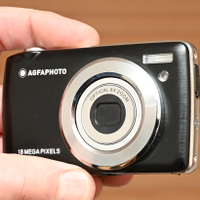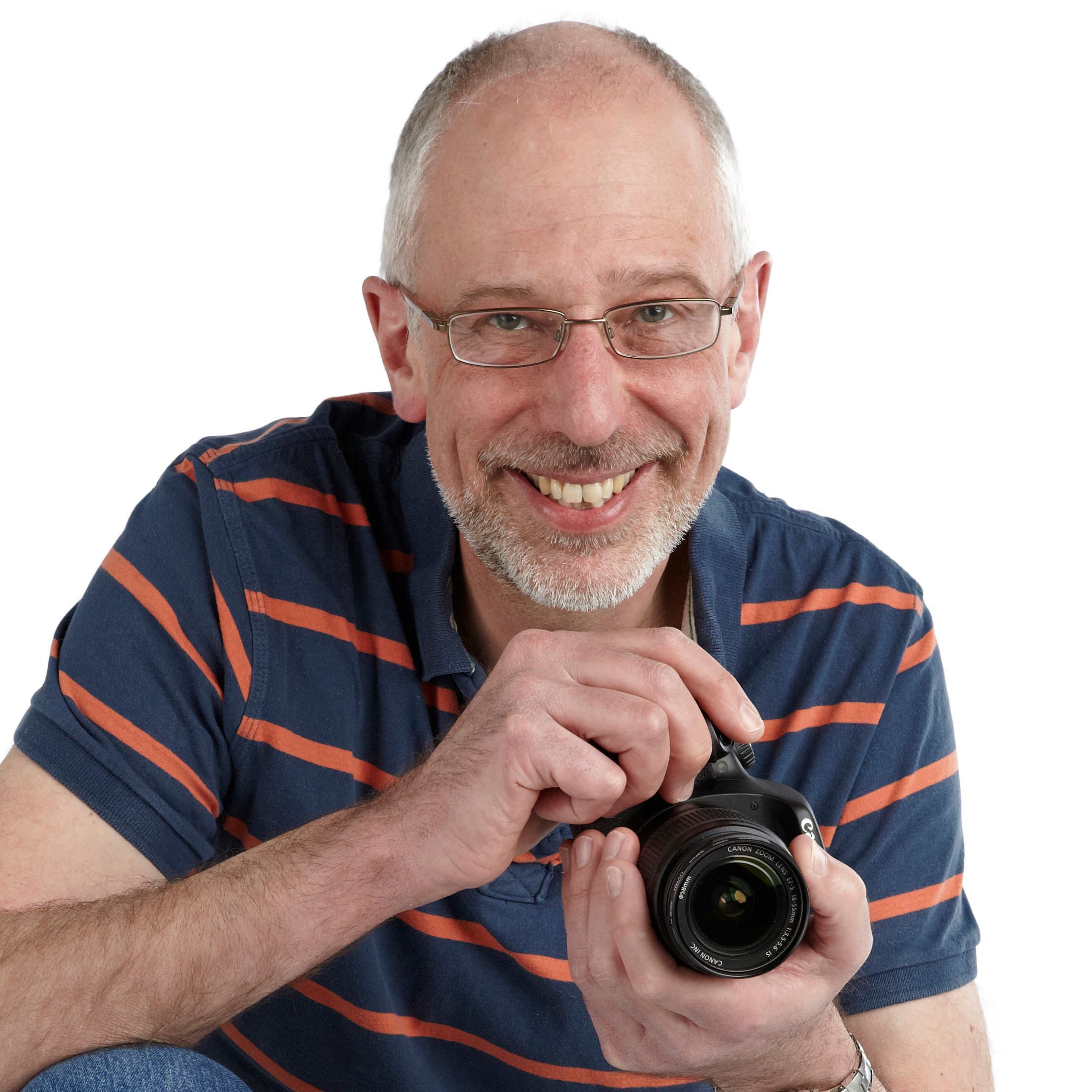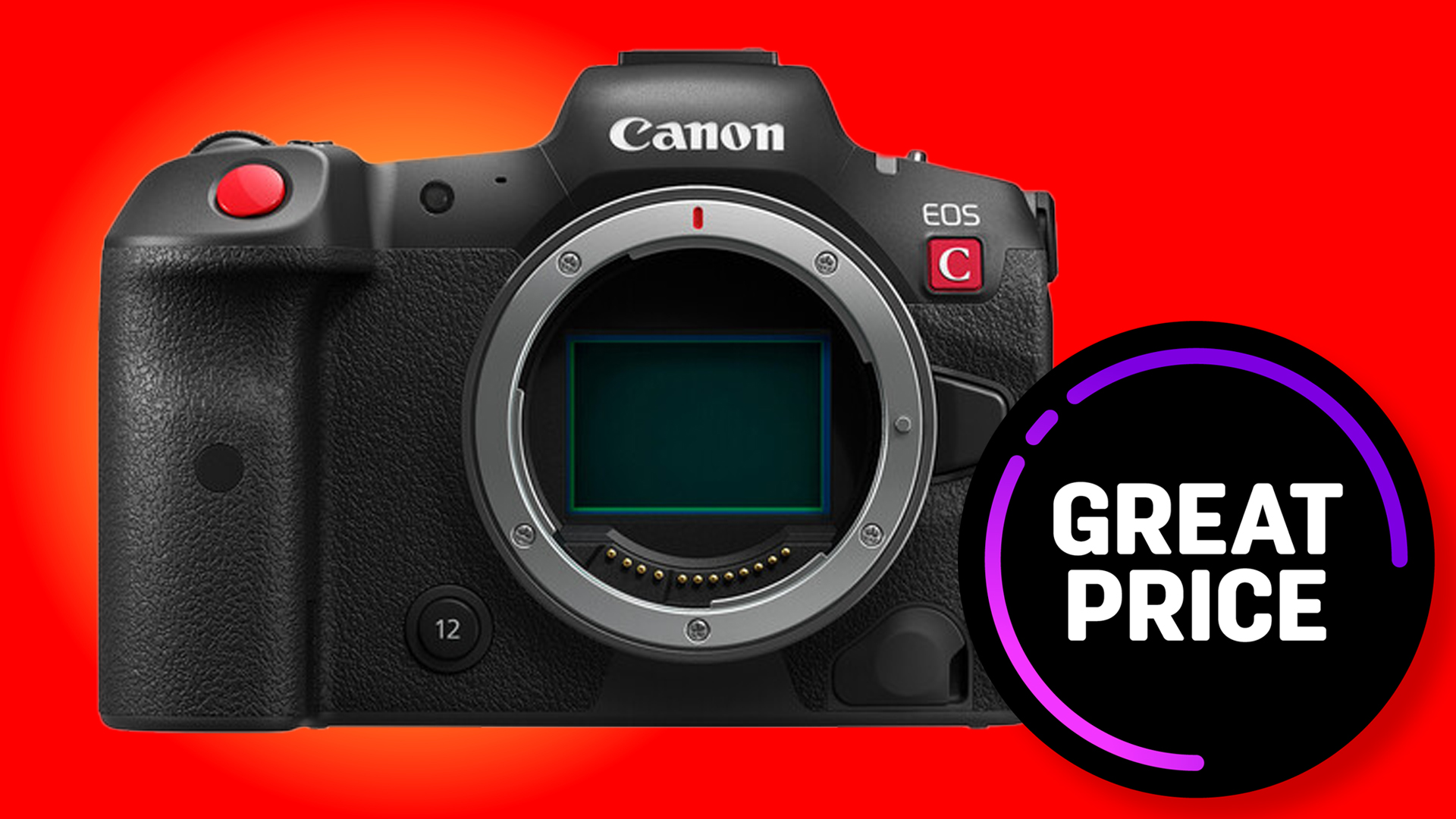Digital Camera World Verdict
The Yashica City 100 is a fun little compact camera. It’s not quite small enough to squeeze into a pocket, lacking a retractable lens, but unlike many ‘cheap’ plastic cameras that I’ve reviewed lately, it has a smart set of features and captures stills and videos that I actually want to keep, thanks to their superior quality. Just don’t get carried away with the hype of its 72 megapixel stills and 5K video.
Pros
- +
13MP Sony image sensor
- +
3x optical zoom lens
- +
Flip-screen for selfies/vlogging
- +
Compact and lightweight
Cons
- -
Not quite pocketable
- -
No viewfinder
- -
Forget the 5K and 72MP claims
- -
Slow motorized zoom
Why you can trust Digital Camera World
Yashica is a famous photographic company that started out in 1949, making bits and pieces for electric clocks before launching its first twin-lens reflex camera in 1953. Like other greats including Agfa, Kodak and Minolta, the name has been bought up and repurposed, finding favor with Gen Z snappers looking for an affordable camera.
To be blunt, I’ve reviewed a fair few cheap plastic digital cameras recently, and have been generally underwhelmed. Getting back to those big names, there have been the passable Kodak PixPro FZ45 and the mostly missable AgfaPhoto Realishot DC8200 and Minolta MND25.
Scraping the barrel, I thought the Andoer Digital Camera and Mutrain X10 Digital Camera were absolutely dire and, although very cheap to buy, were only fit for the recycling bin (as were their photos).
The Yashica City 100 sets its sights rather higher. Sure, it’s more expensive to buy but combines a relatively sophisticated set of features with the prospect of seriously superior performance. It’s not going to be one of the best compact cameras that money can buy, nor one of the best retro cameras on the market, but it could well be one of the best cheap cameras if you’re after something on a tight budget that’s fun to use and delivers images and video that you might actually want to keep.
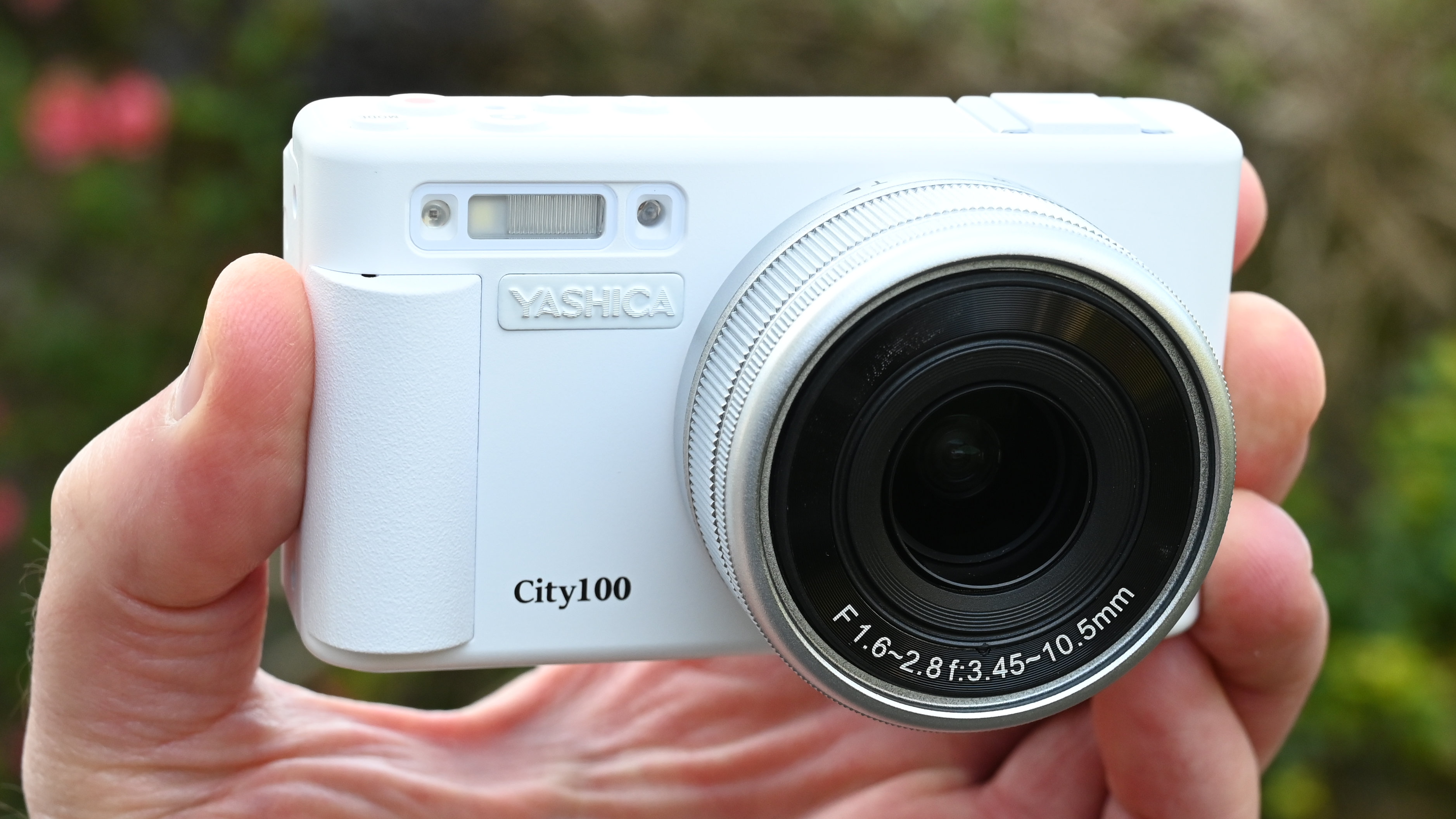
Yashica City 100: Specifications
Photo Resolution | 72MP (13MP native) |
Video Resolution | 5K30 max |
Image Sensor | 13MP, 1/3" CMOS |
Selfie mirror | Flip screen |
Display | 2.8-inch flip LCD |
Touchscreen | No |
Battery | Li-ion |
Connections | USB-C, Mic |
Size (WHD) | 106 x 66 x 61mm / 4.2x2.6x2.4” |
Weight | 220g / 7.8oz |
Yashica City 100: Price
The Yashica City 100 went on sale in the Spring of 2025 with a price tag of $209 / £220. A sibling City 200 was set to follow a few weeks later, priced at $249 / £259 boasting a 10x optical zoom range compared with the 3x zoom lens of the City 100. Let’s face it, the City 100 is certainly an inexpensive camera, but it’s more than twice the price of the Kodak PixPro FZ45 at $90 / £94 and the Minolta MND25 at $99 / £98. Is it worth the extra outlay? Let’s find out…
Yashica City 100: Design & Handling
Available in black or white, the Yachica City 100 has a certain retro charm, taking styling cues from the compact cameras of yesteryear. The black version is simply black all over, whereas the white edition that I’m reviewing here has a silver colored lens. The lens itself is a good place to start. Unlike many cheap compact cameras that rely on digital zoom to alter the focal length, with an incumbent loss of image quality, the Yashica has a 3x zoom lens. My only complaint is that the lens is quite chunky and its not retractable. The net result is that the camera is 61mm (2.4”) thick even when switched off, so a little too large to slip into a spare pocket, unlike some competing compact cameras.
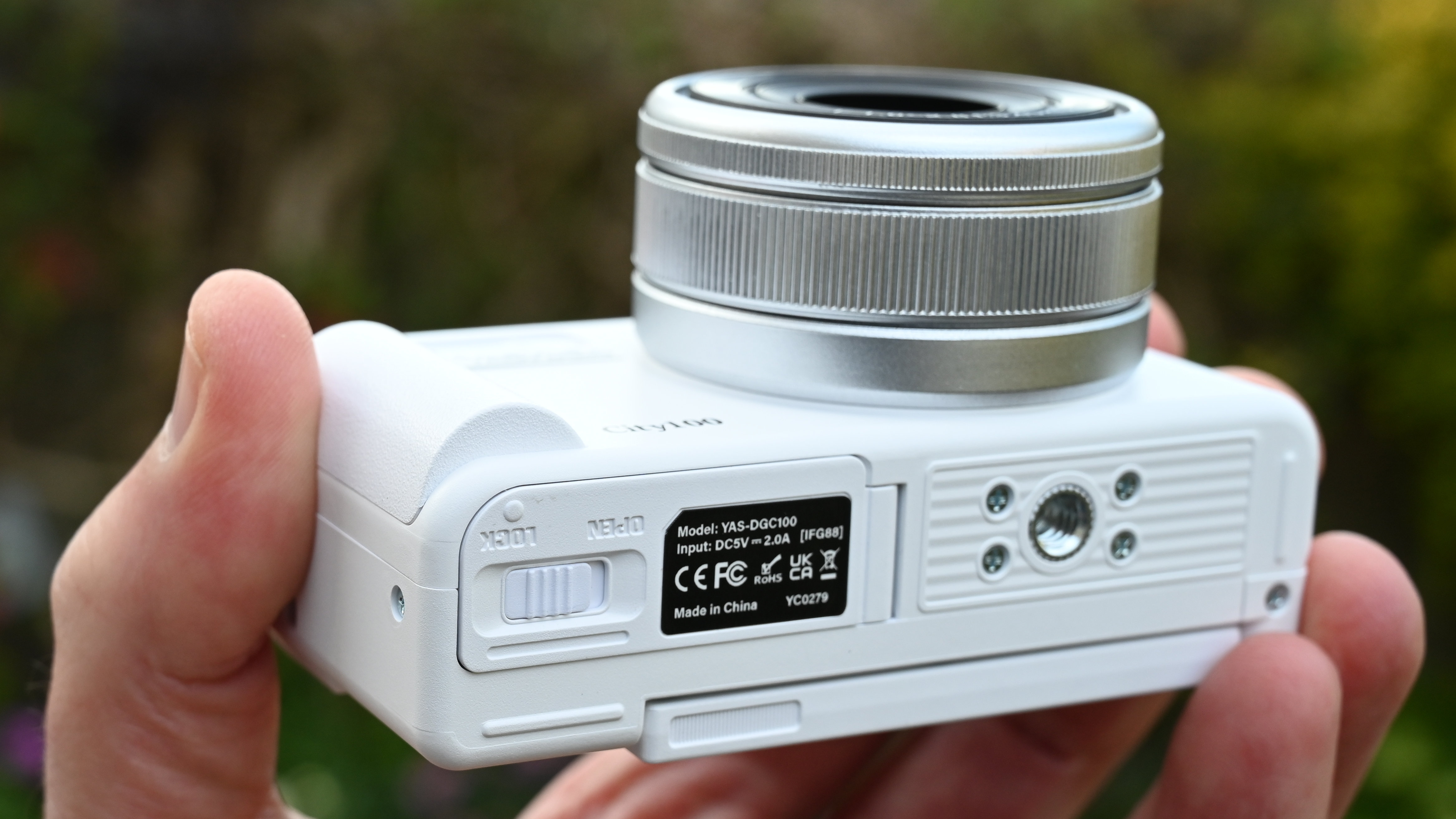
The optical zoom range stretches from 25.4mm to 76.3mm in full-frame equivalence, so you get everything from pretty generous wide-angle coverage to a short telephoto length. The widest available aperture shrinks from f/1.6 to f/3.45 along the way. The zoom mechanism is motorized which is handier for shooting video rather than stills, especially as the zoom speed is rather slow. If you need more telephoto reach, digital zoom is still available with interpolation to best-guess what’s between the dots that the image sensor can actually see.
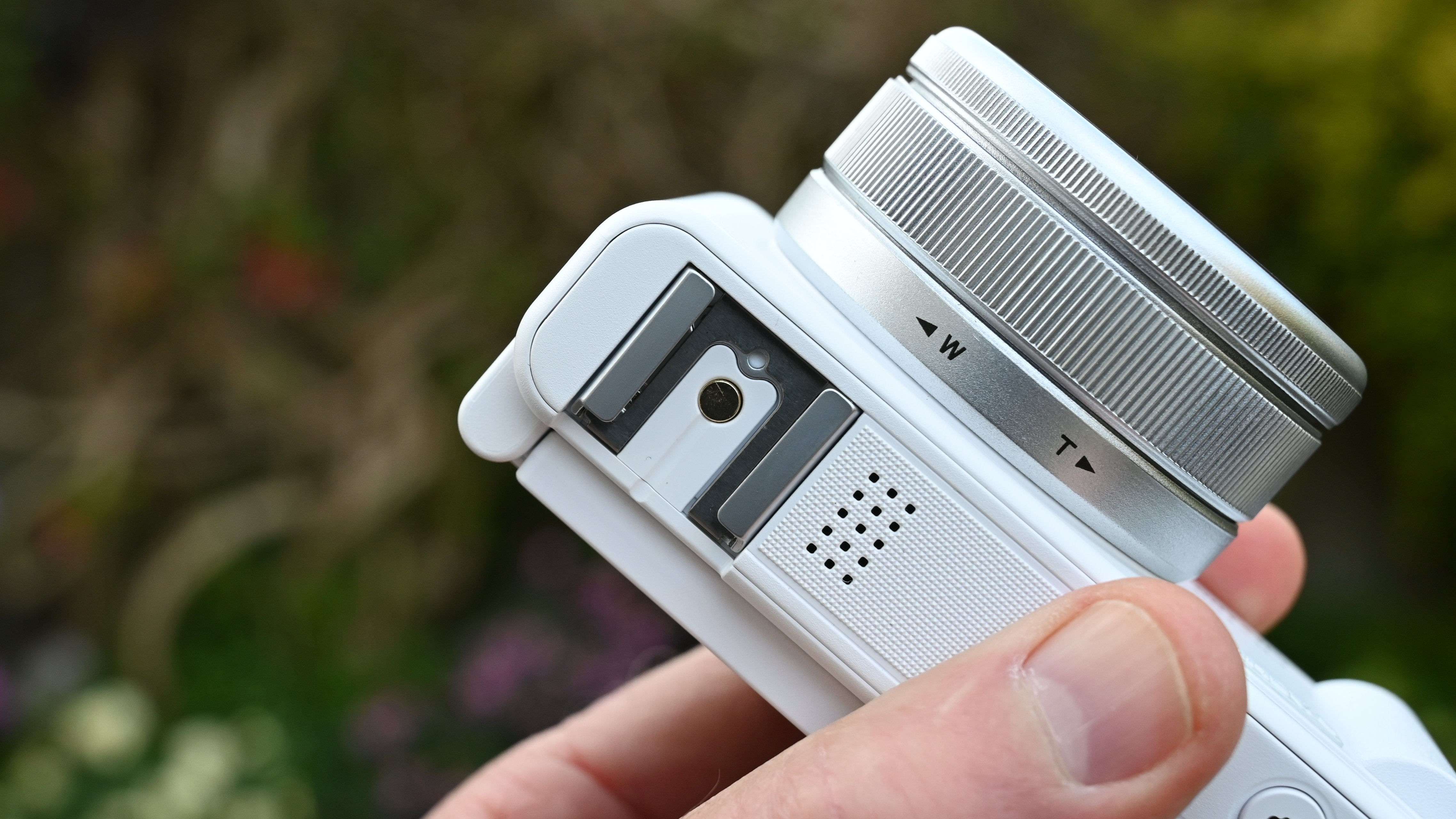
With that in mind, let’s move onto the image sensor itself. Many cheap digital cameras on the market claim to have 48 megapixel resolution or more, but don’t disclose how many megapixels are packed onto the image sensor itself. As with digital zoom, software interpolation is used to take a relatively small number of megapixels and big them up into large numbers. The Yashica is more honest in this respect. It’s clear about having a physically fairly small 1/3-inch image sensor with a native resolution of 13 megapixels. The image sensor is actually made by Sony, who you might have heard of. Playing the numbers game, Yashica does say that the City 100 can output 72 megapixel still images and video up to 5K30 or 4K60 resolution. I’ll come back to that later.
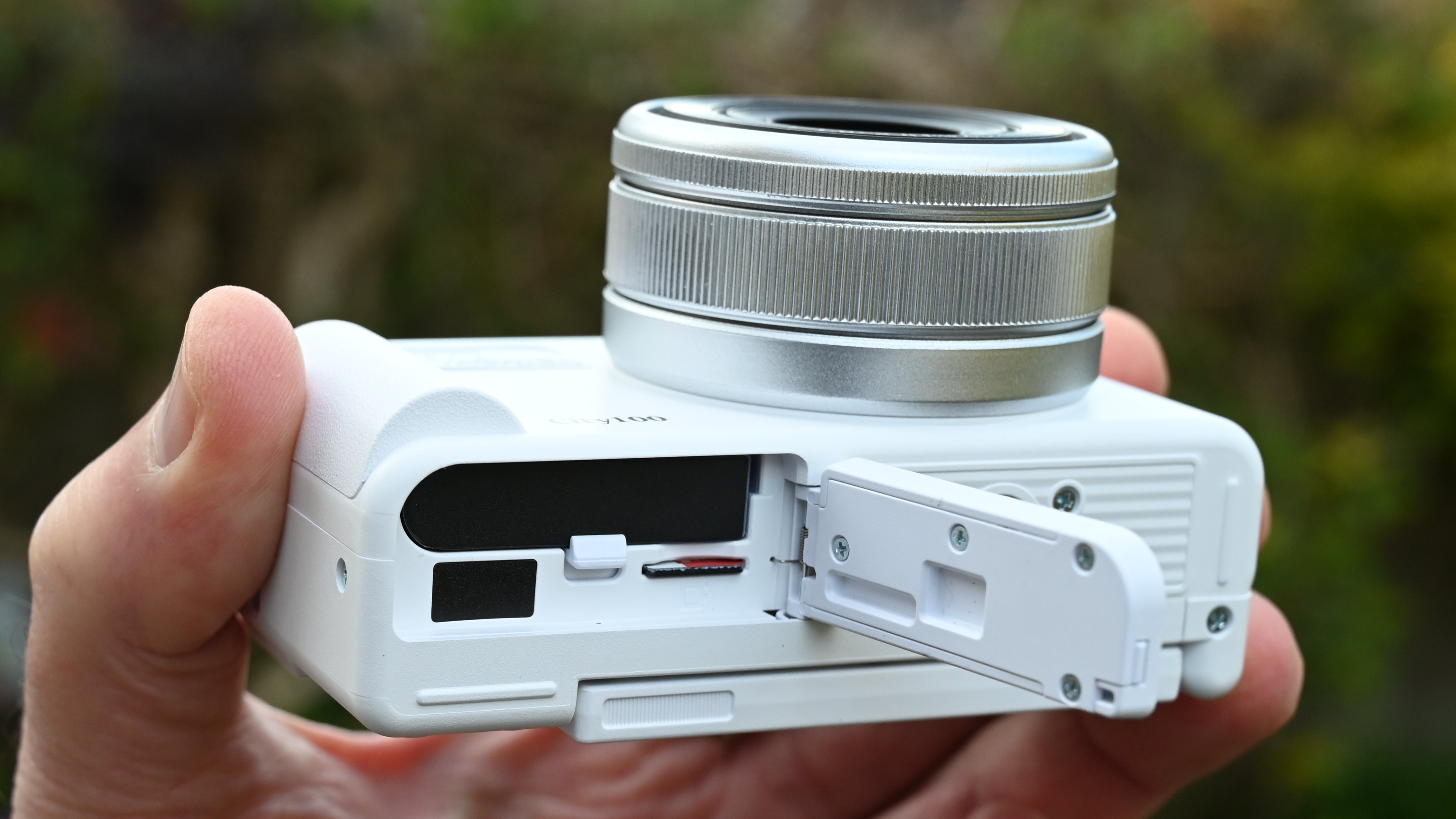
As well as the protruding zoom lens, the front panel of the camera hosts a small built-in flash module and a sculpted hand grip, that helps with ergonomics and makes handholding feel more secure. The right hand side of the camera features a pair of holes for attaching the supplied wrist strap, and a small stretchy cord is also supplied for attaching the lens cap, which fixes to the front of the lens via magnets and somewhat easily comes adrift.
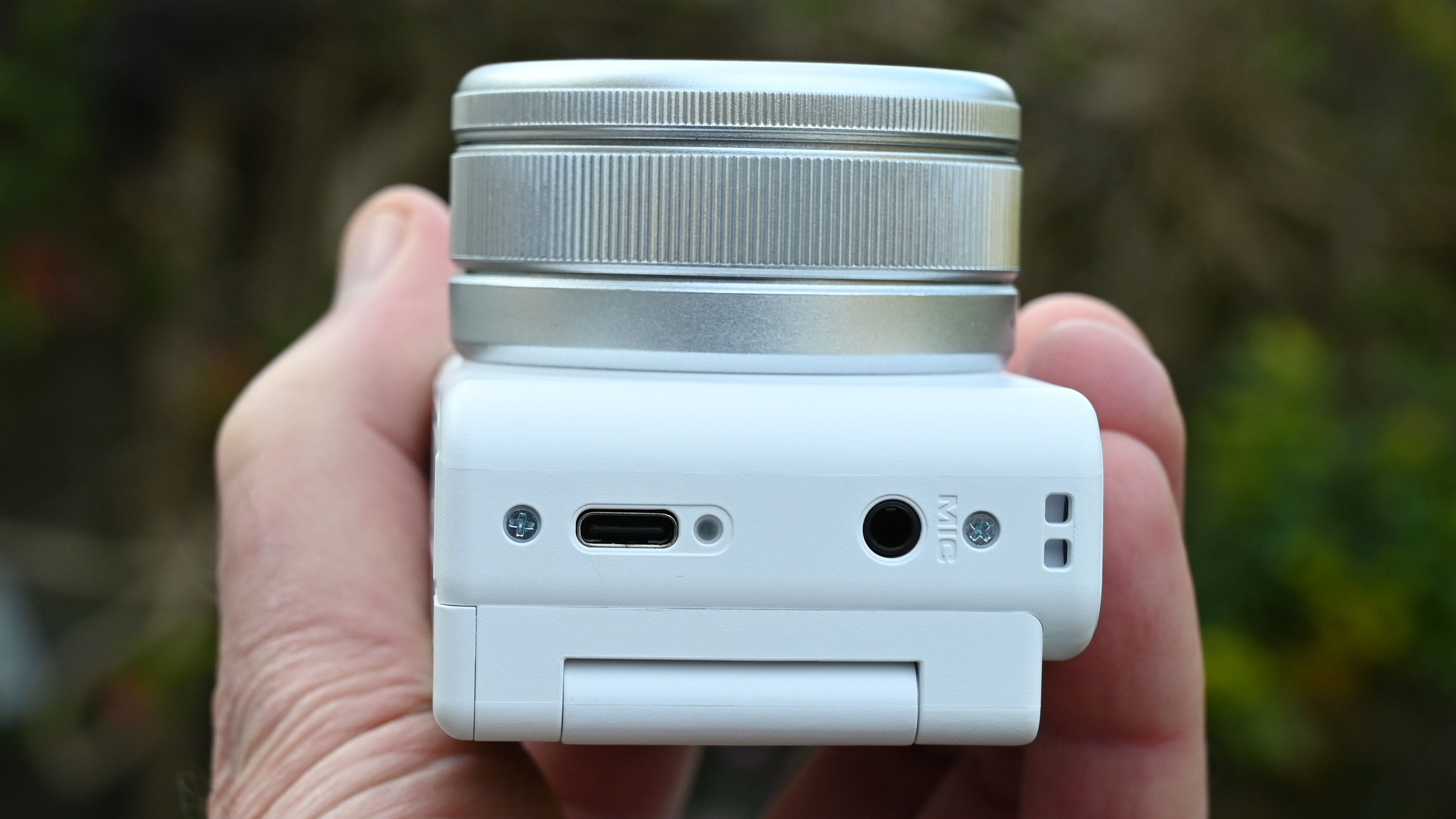
As well as a built-in flash module, the camera features a hot-shoe on its top panel for attaching a separate flashgun. I’m keen on that, as the built-in module is typically too weak for anything other than adding a little fill-in flash to illuminate shadows. Just next to the hot-shoe is a built-in microphone for video capture, and there’s also a socket for using an external mic on the left hand side panel, as well as a USB-C port for charging the battery and downloading images and video clips.
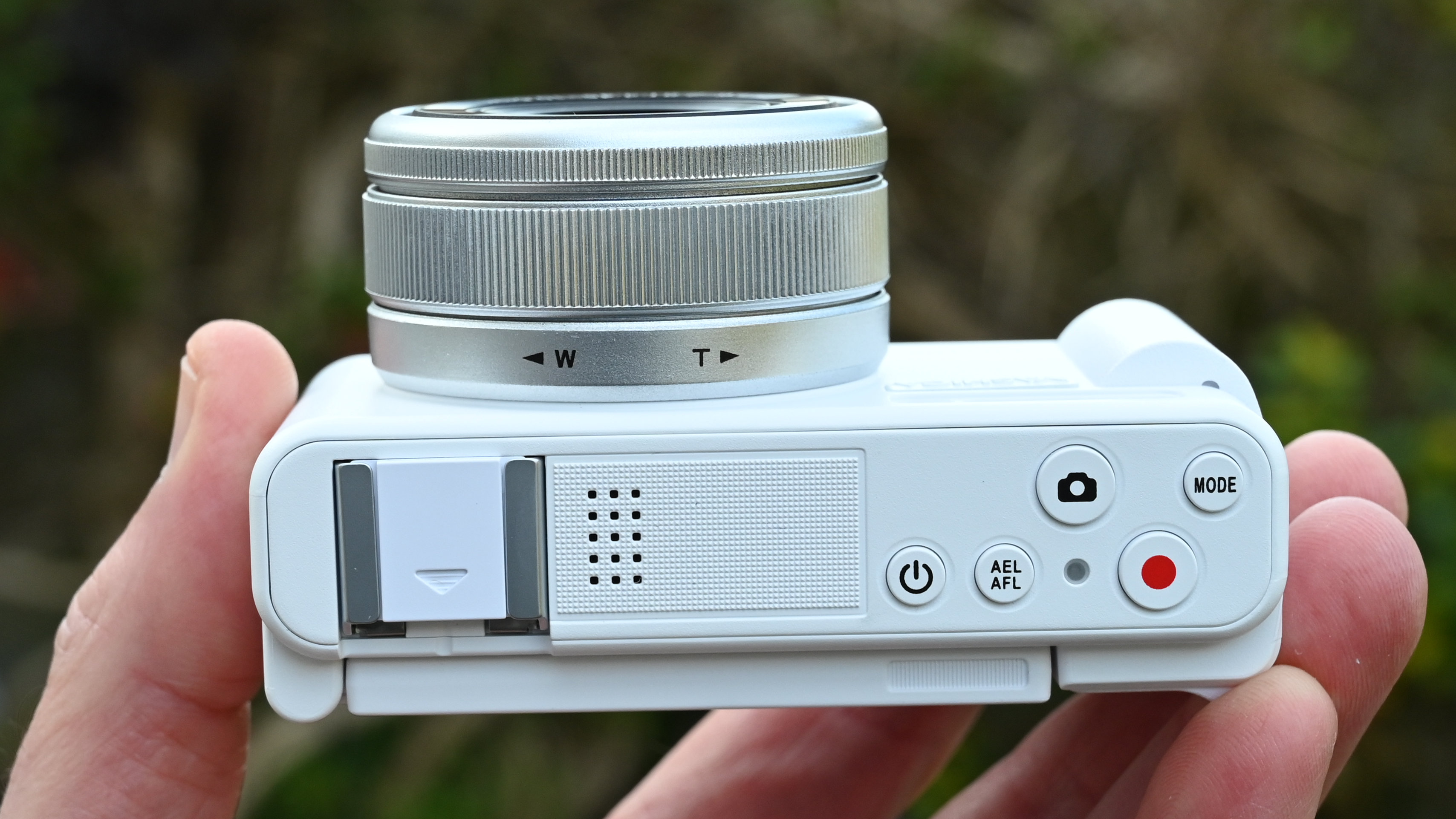
Over on the right hand side of the top panel there’s a handy array of buttons for power on/off, AEL/AFL (Auto Exposure Lock / Autofocus Lock) and a Mode button. There are also separate buttons for shutter release (complete with a light-press action for initiating autofocus and exposure metering) and video recording start/stop.
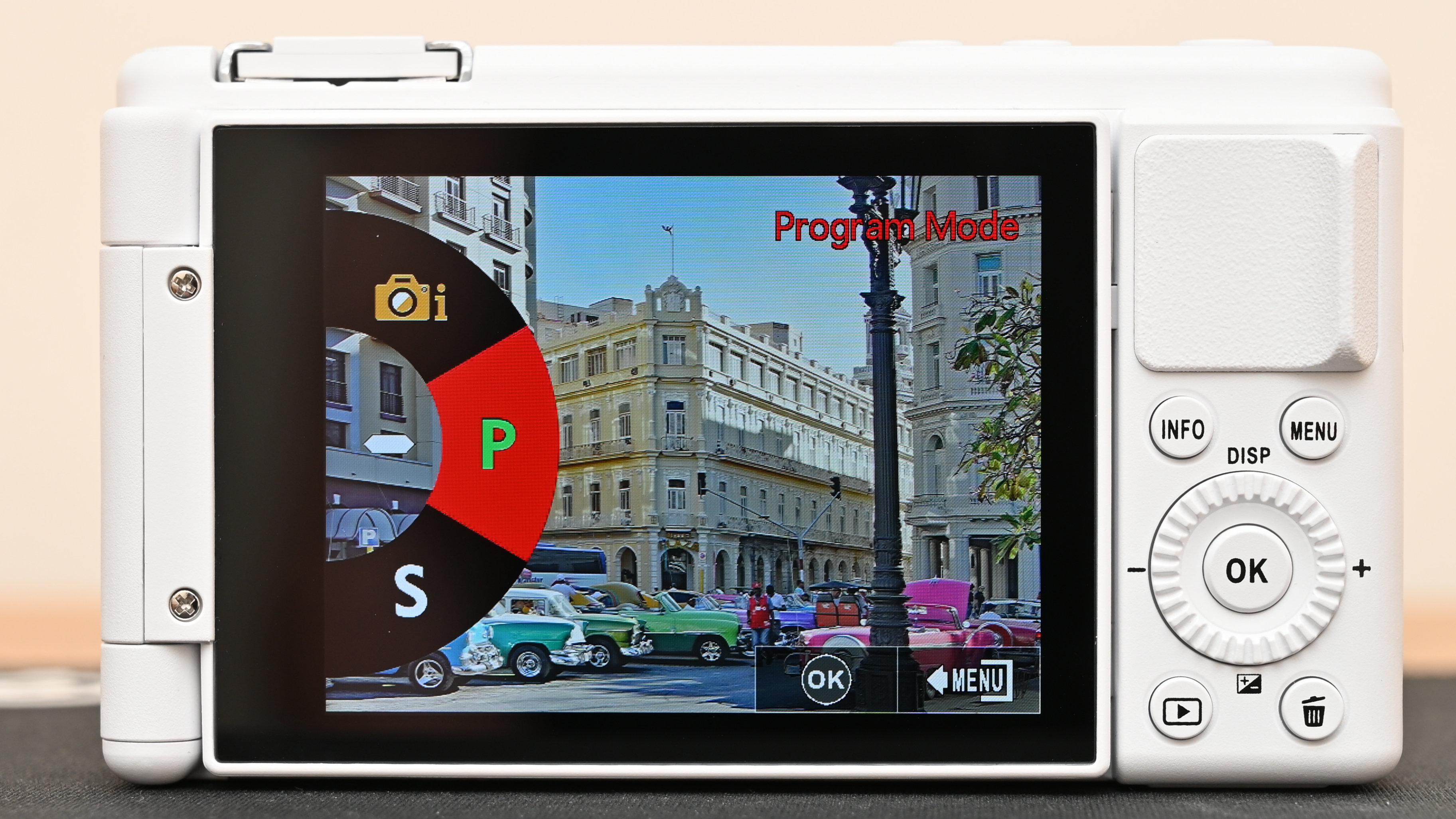
There’s no shortage of shooting modes on offer, including full ‘intelligent’ Auto, Program, Shutter-priority, Scene modes, Infrared and Movie. Delving further into scene modes, there are landscape, portrait, sports, night portrait, night scene, food, sunset, backlight and high-ISO on the menu.
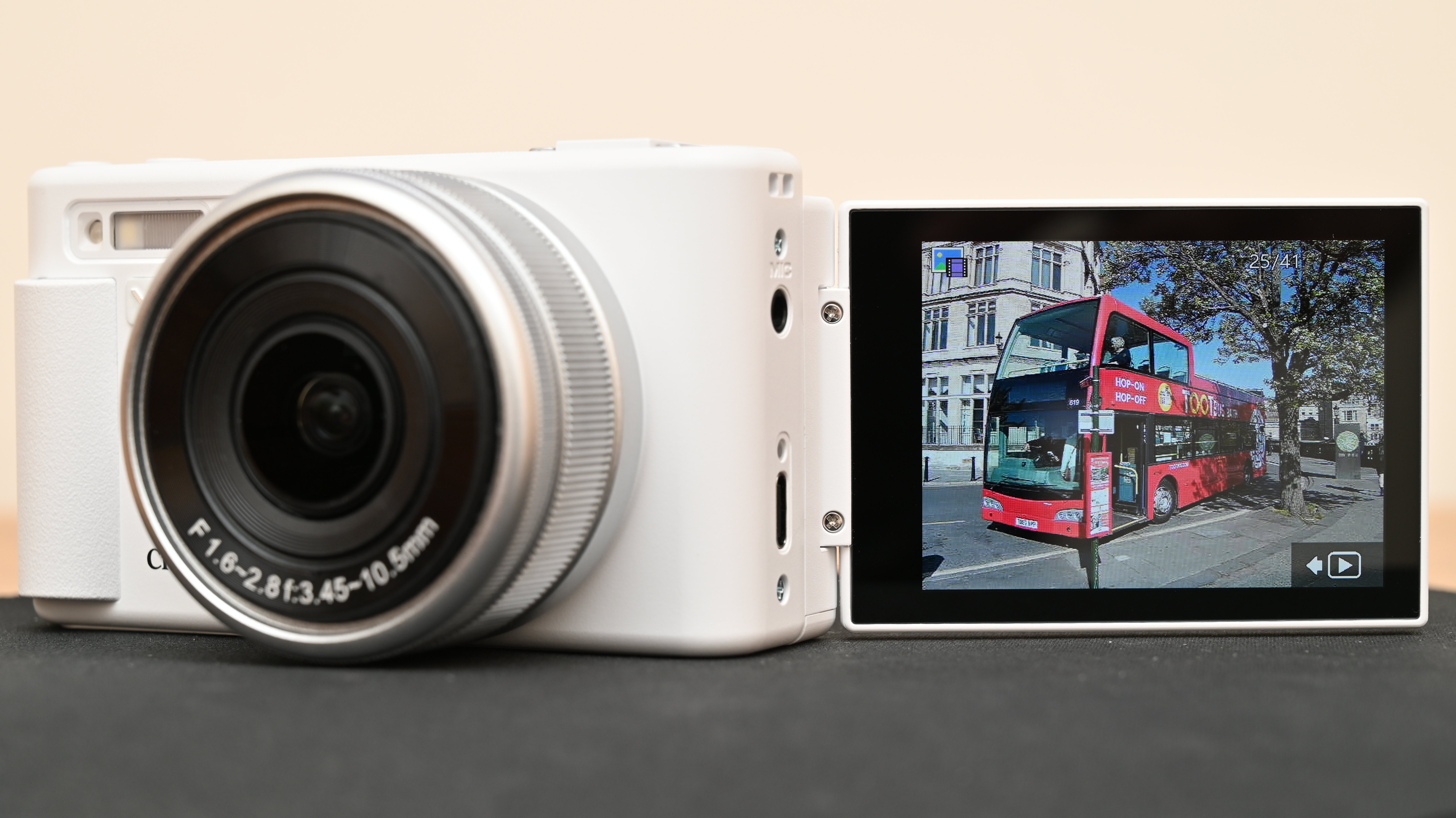
Around the back, there’s a 2.8-inch LCD screen. As I’d expect at this price point, it’s not a touchscreen. On the plus side, it is an articulated screen which is quite unusual in budget compact cameras. The ability to flip the screen around to face forward is a major bonus for taking selfies and for vlogging. However, I found the screen quite hard to view clearly in bright sunny conditions, which can be a pain as the camera has no viewfinder.
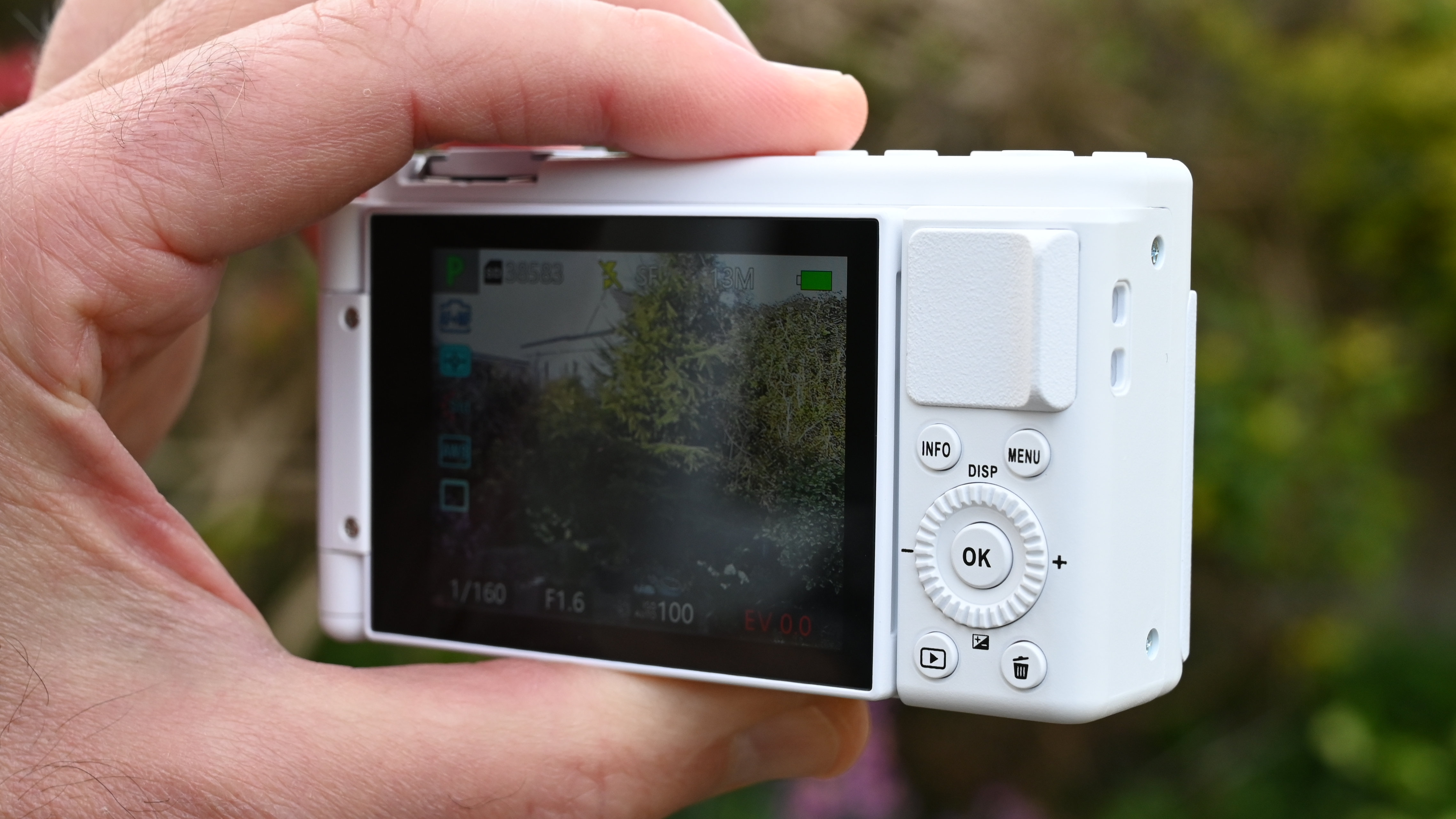
The back panel also has a time-honored 4-way pad with an OK button at the center, along with buttons for Info, Menu, Playback and Delete. The menu system itself is clear and intuitive, well suited to the entry-level / beginner aspirations of the camera.
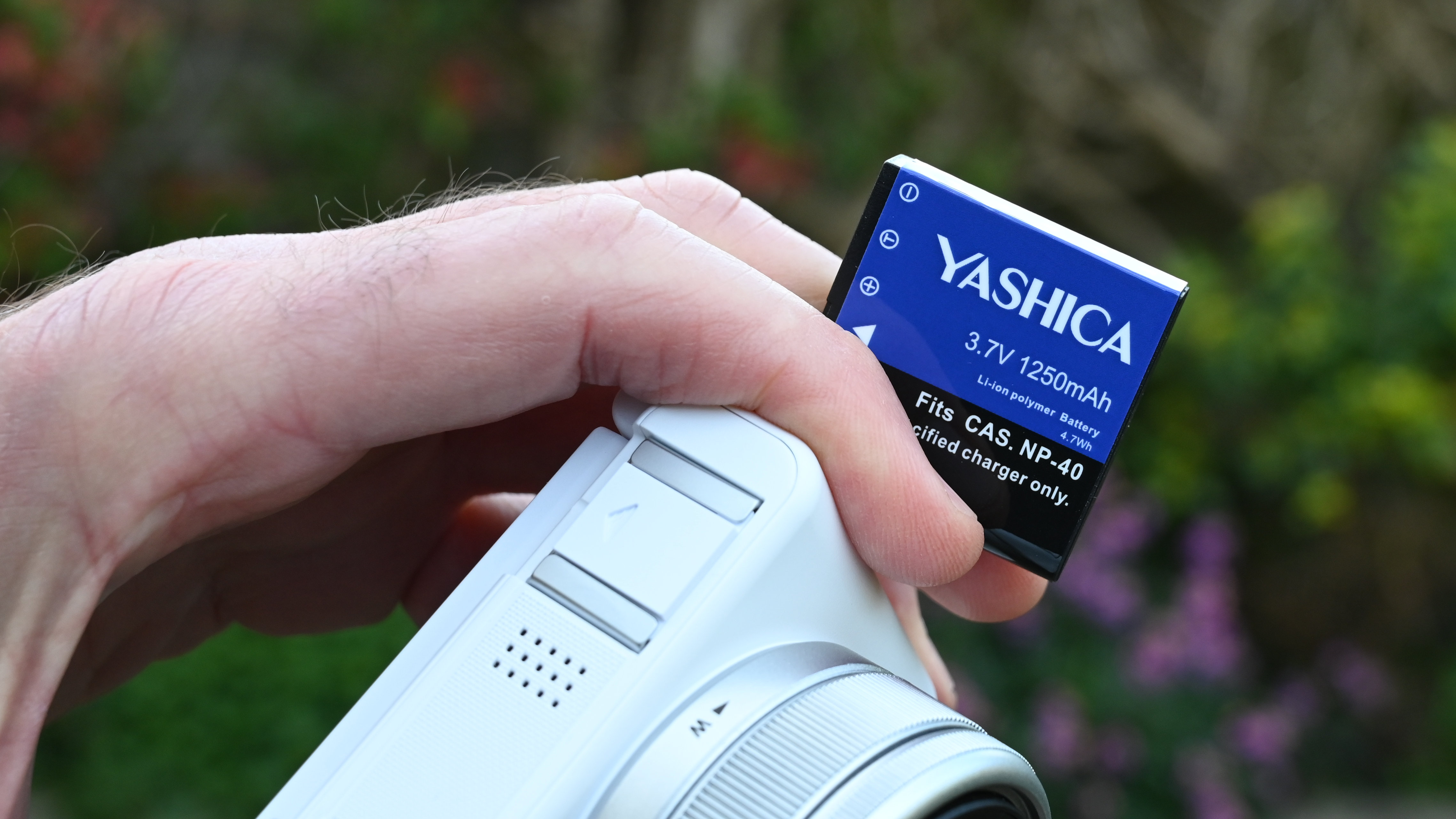
A quick look at the underside of the camera reveals a tripods mounting socket, which I’m please to see as these are sometimes lacking in small compact cameras. A locking flap uncovers the rechargeable Li-ion battery that’s supplied with the camera, and a slot for a microSD card, which isn’t supplied so you’ll have to buy one separately.
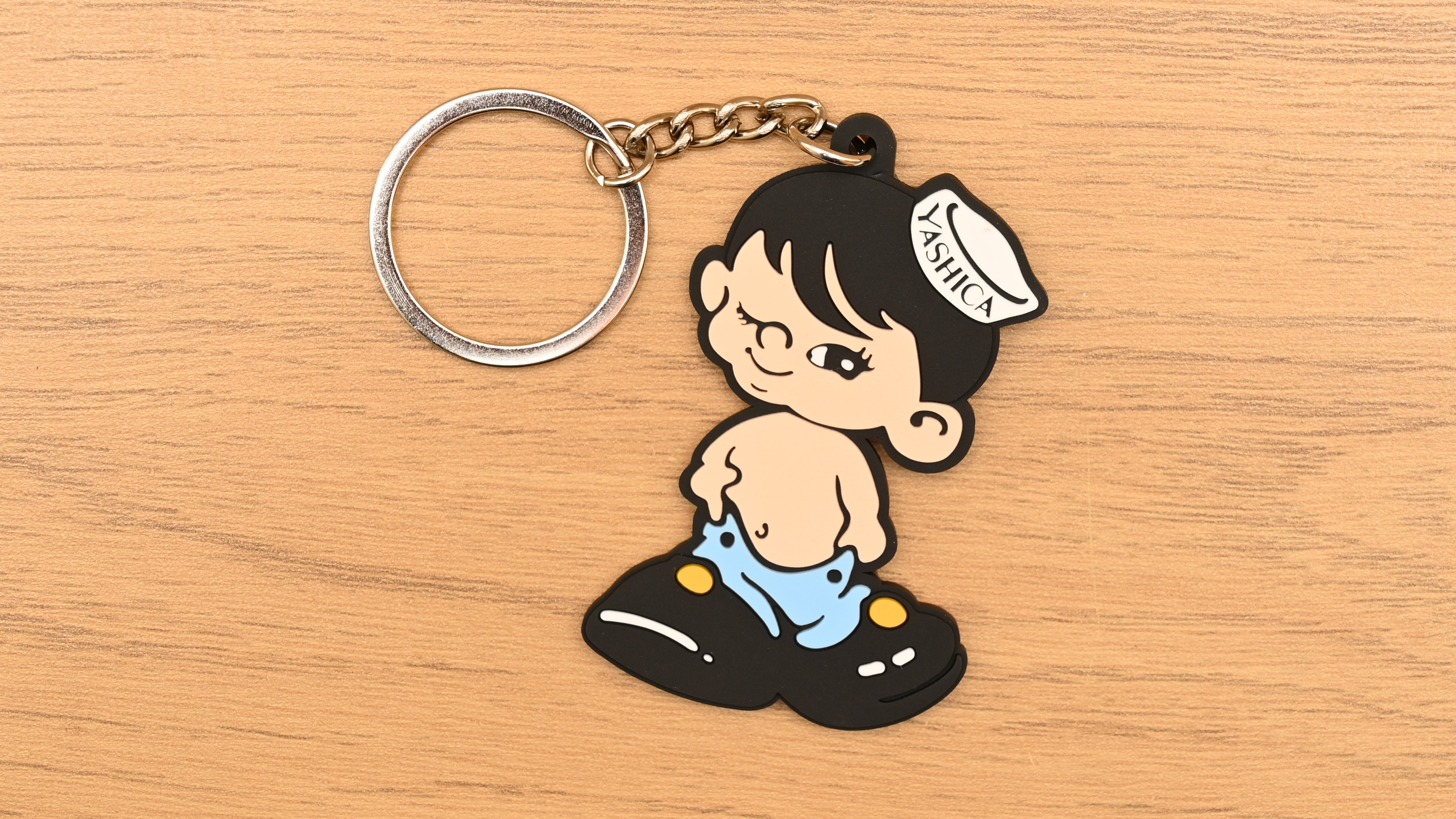
Yashica City 100: Performance
I was relatively impressed with the performance of the City 100, even before taking my first photo with it. Compared with many cheap compacts, I found that the autofocus was quick and responsive, locking onto targets with assured accuracy. The face-detection autofocus option also worked well in my tests.
Fully pressing the shutter button I was rewarded with my first stills shot, which again I found of relatively high quality. Sharpness, dynamic range and color rendition were all convincing for an inexpensive compact camera, and streets ahead of image quality that I’ve recently got from a few cheaper compact cameras. The scene modes and filter options also work well and are worth having. One weak area I found was that the camera was prone to purple color fringing but, even so, overall image quality is very pleasing.
The following pair of images demonstrate the most wide-angle and telephoto focal lengths available from the lens’s optical zoom range, with no digital zoom applied.
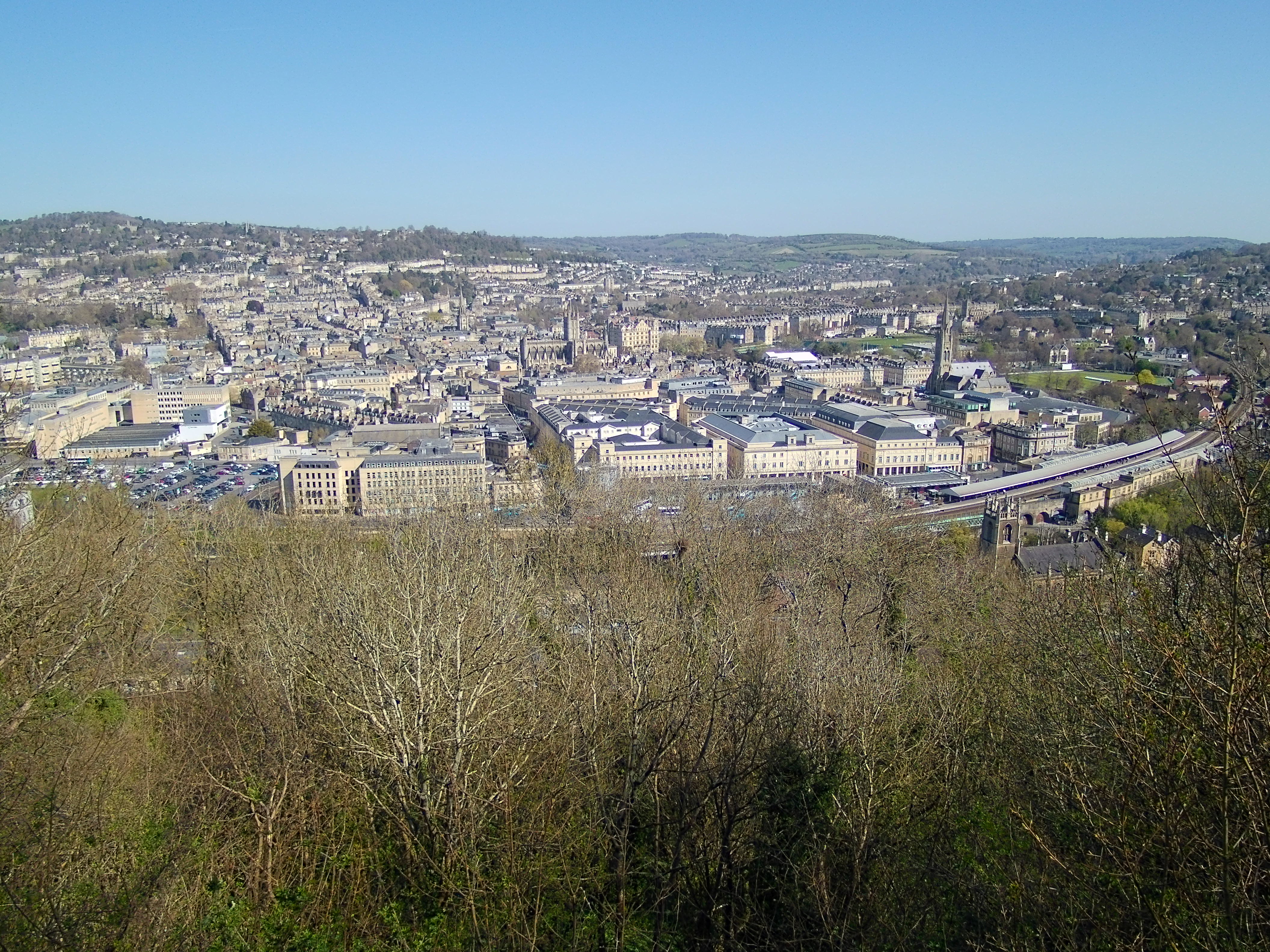
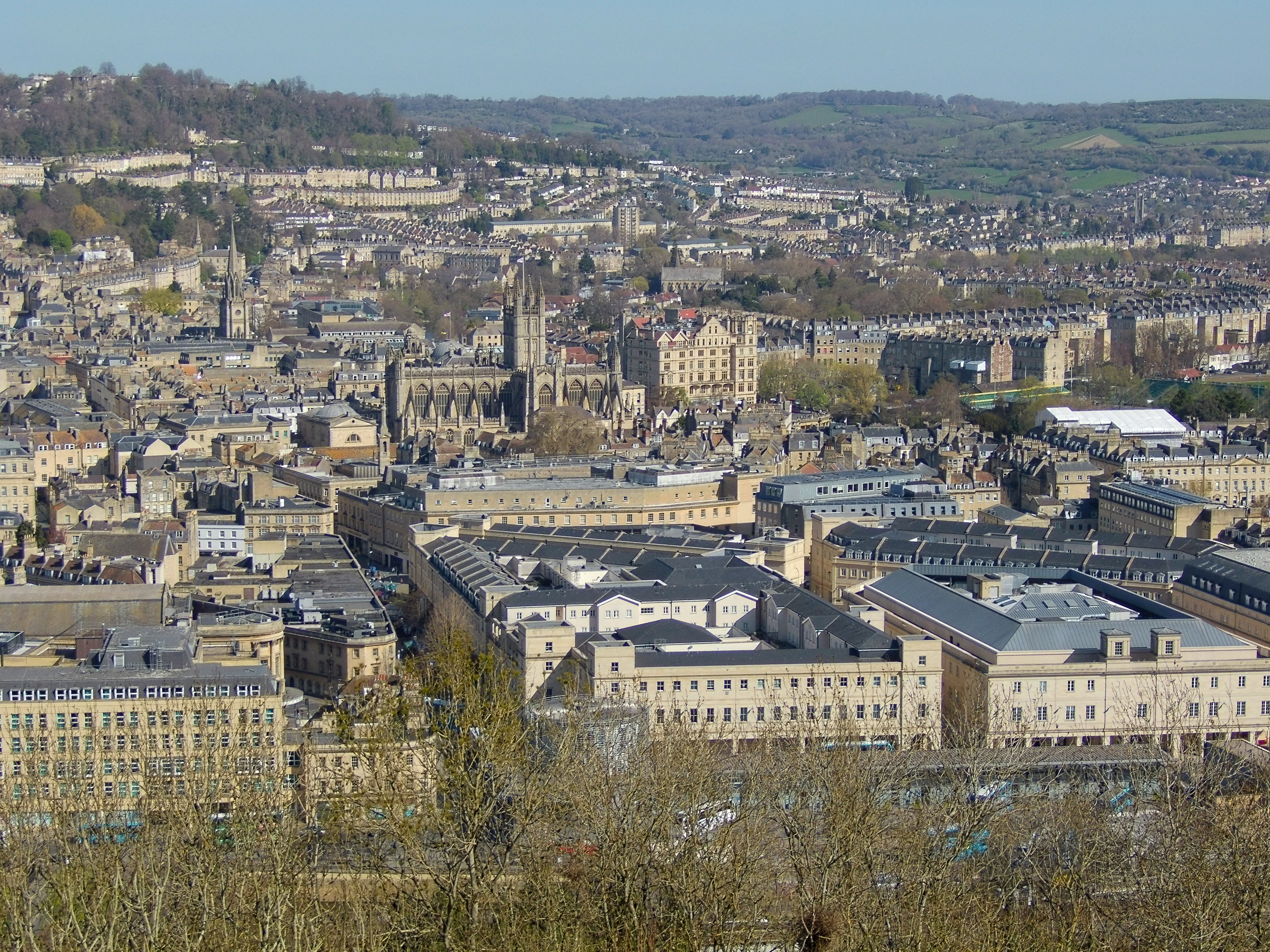
One thing I’ve found with many cheap cameras of late is that image quality looks pretty noisy even at the lowest sensitivity setting, and gets really bad at higher settings. The City 100 actually has a reasonably generous sensitivity range of ISO 100-3200. As well as an Auto option.
As you’ll see in the gallery below, of a model MOTOGP bike under low lighting conditions, there’s a combination of fine detail and little noise at lower ISO settings, with fine detail becoming noticeably smoothed over at ISO 1600 and more apparent noise at the highest ISO 3200 setting. Again, the Yashica is an impressive performer in this respect.
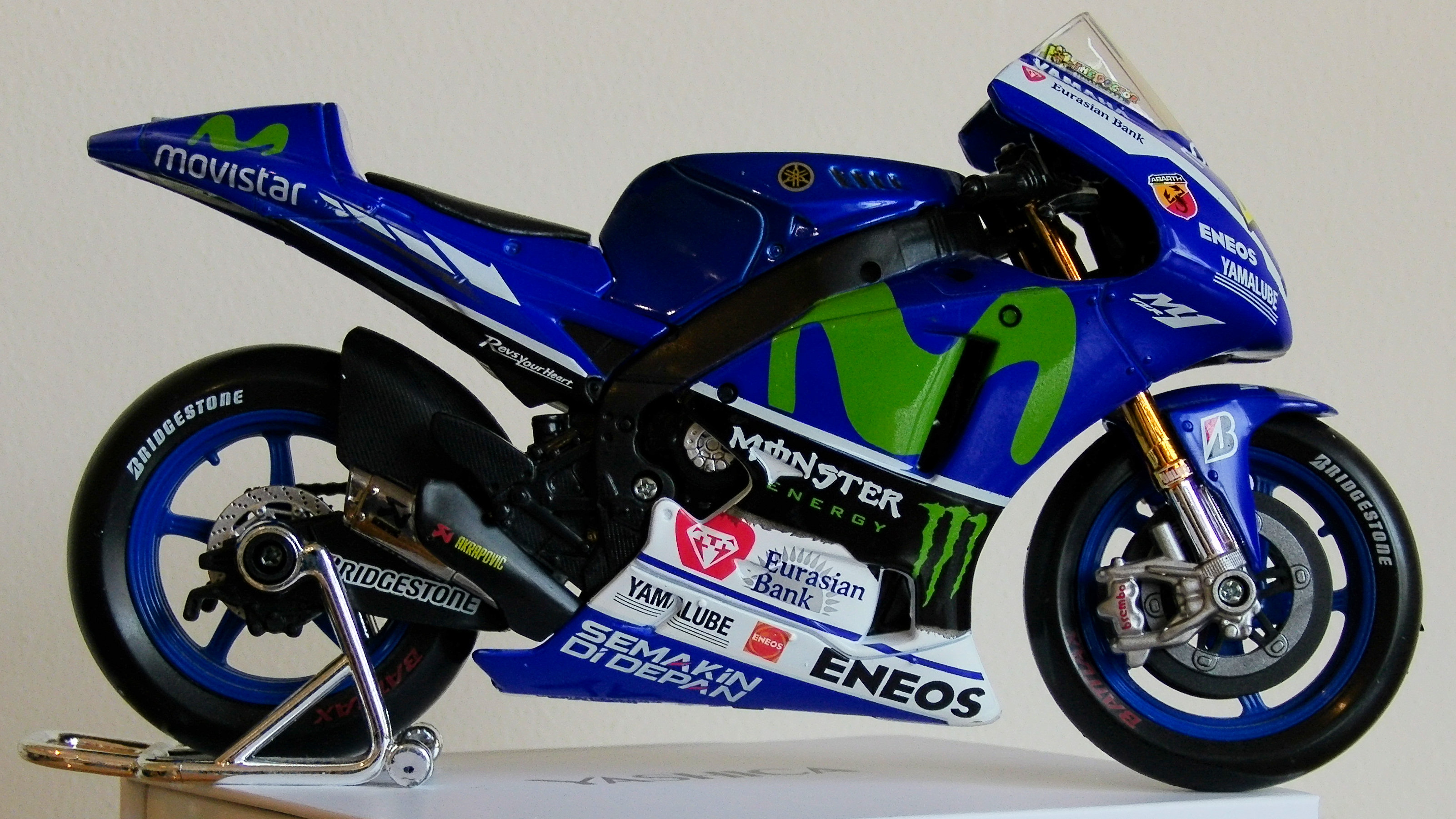
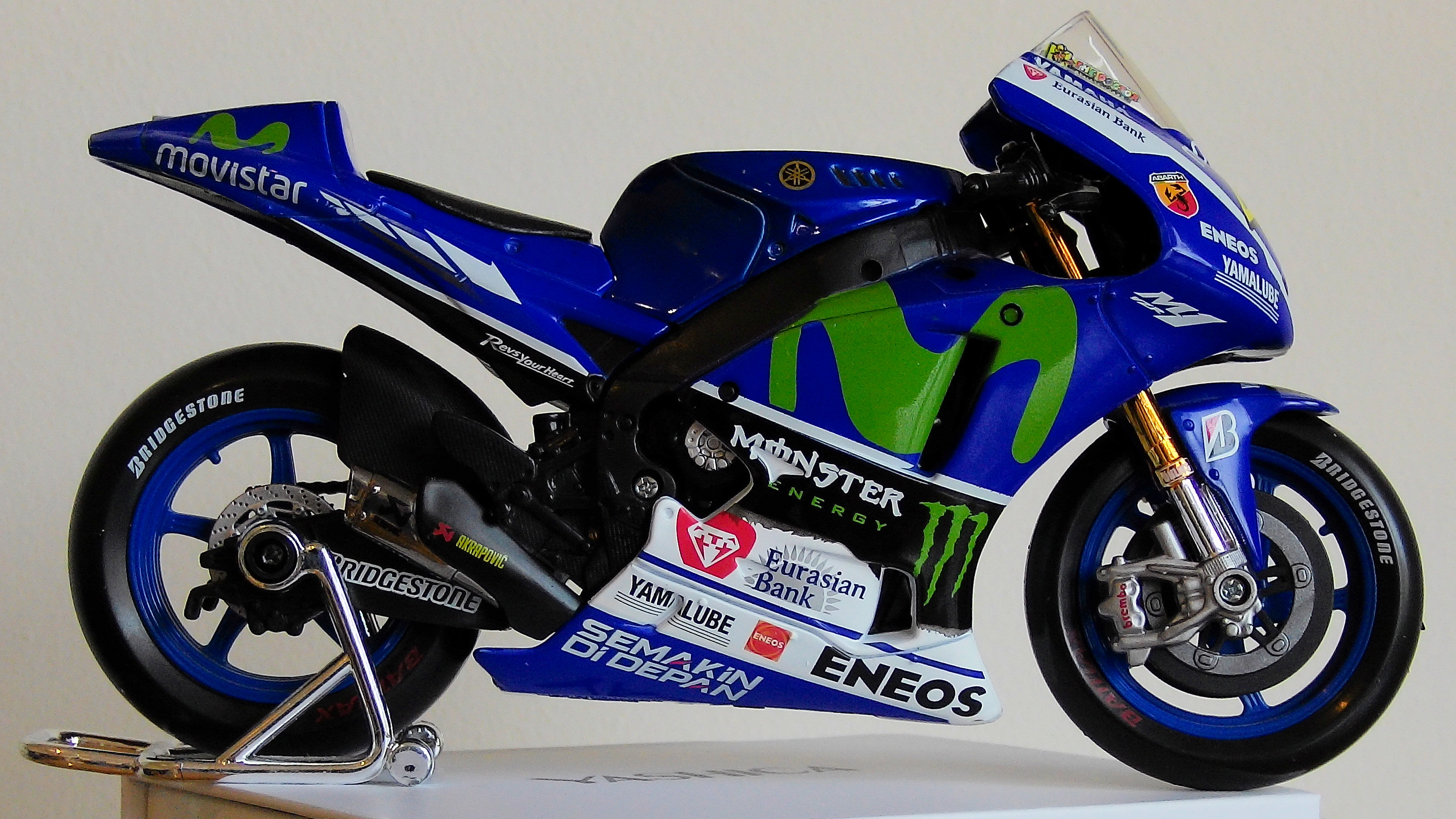
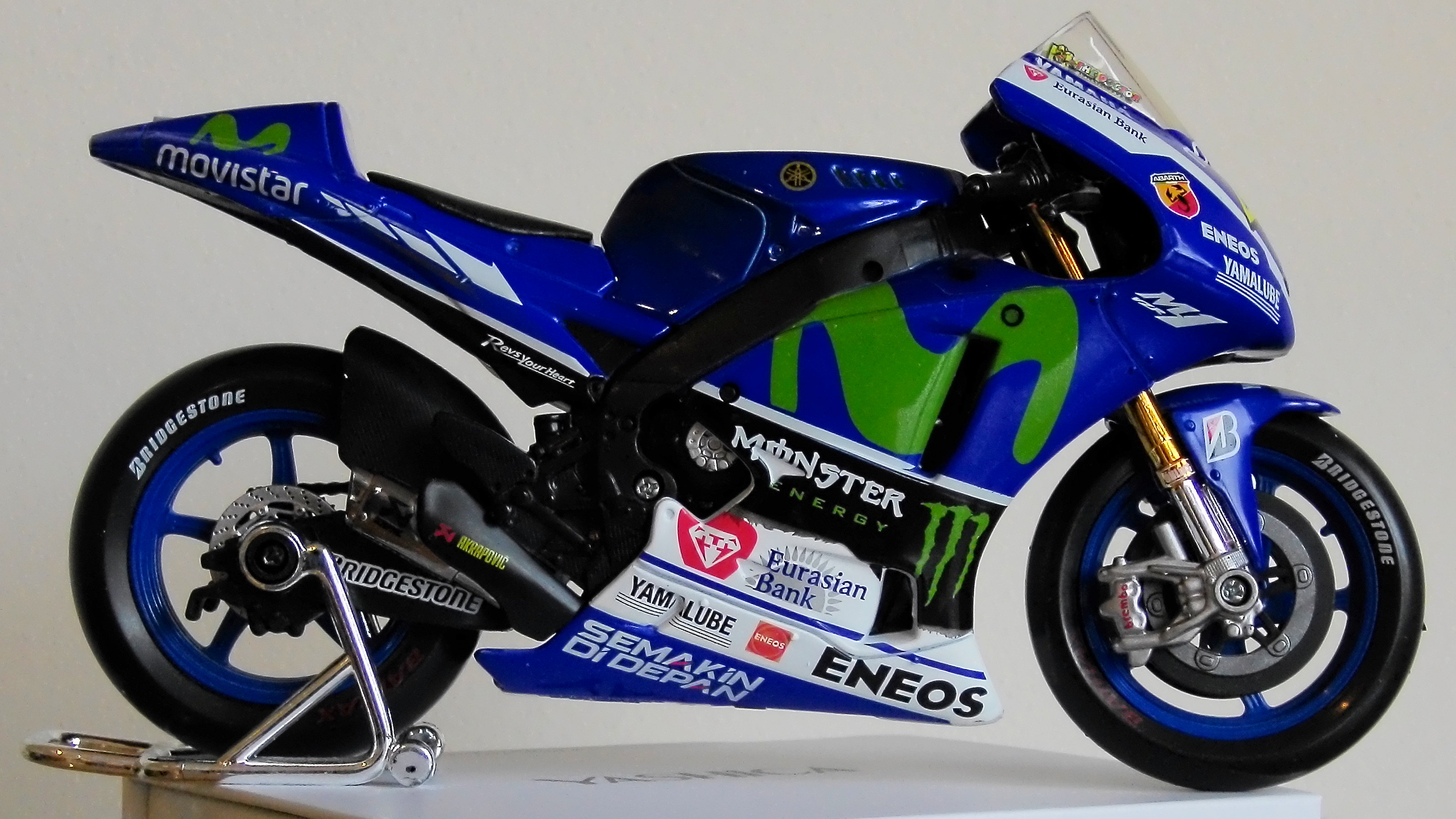
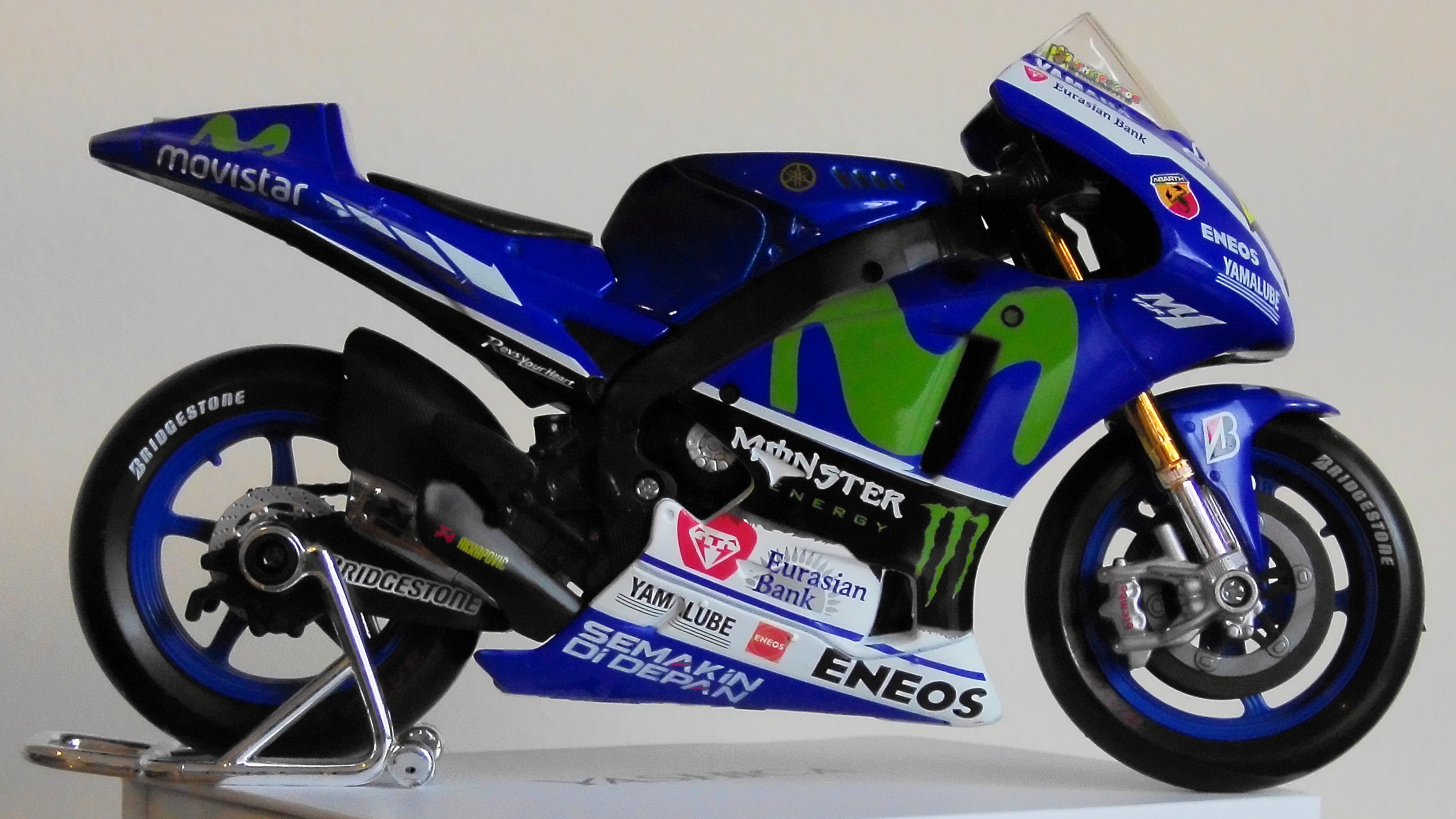
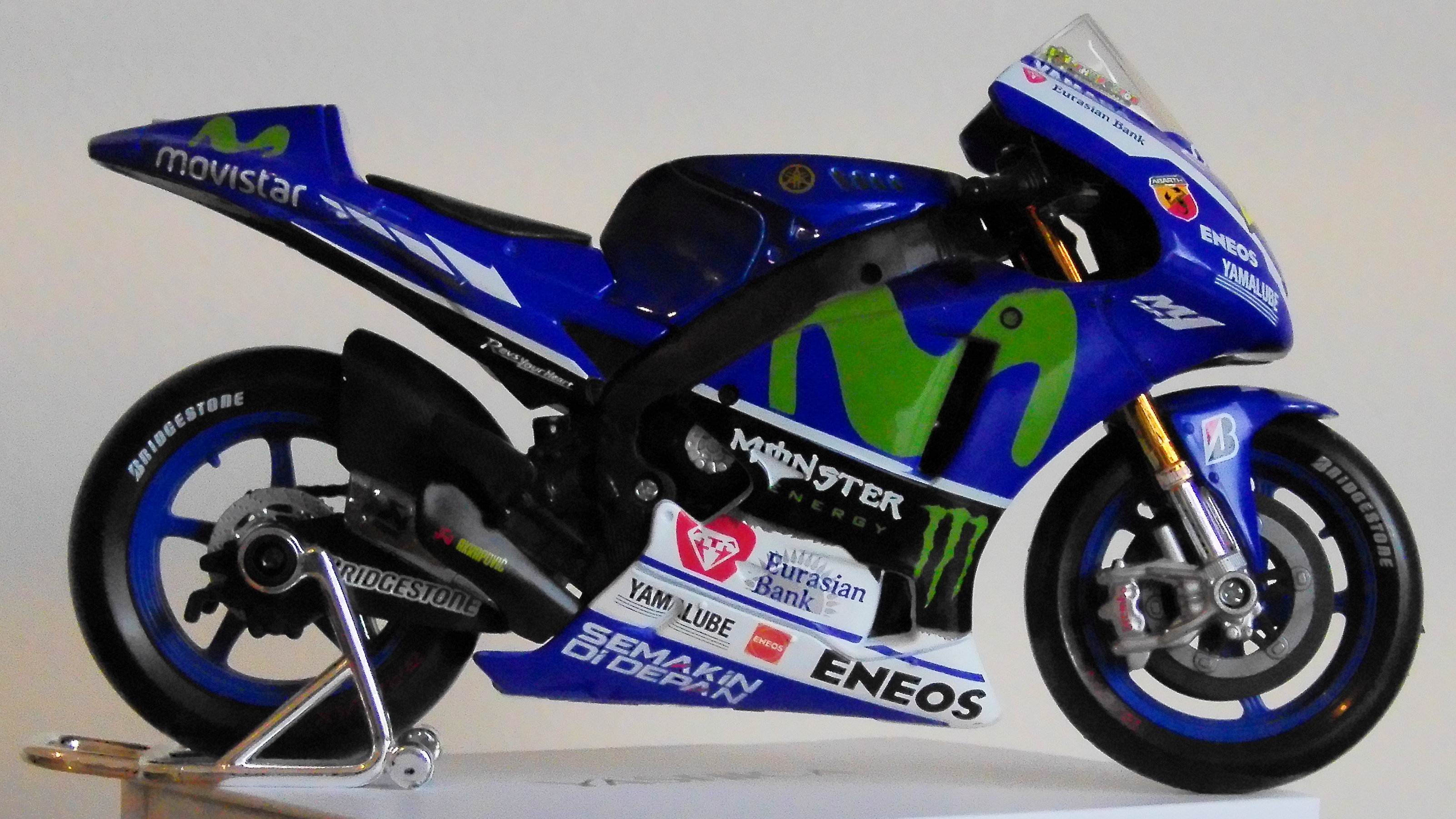
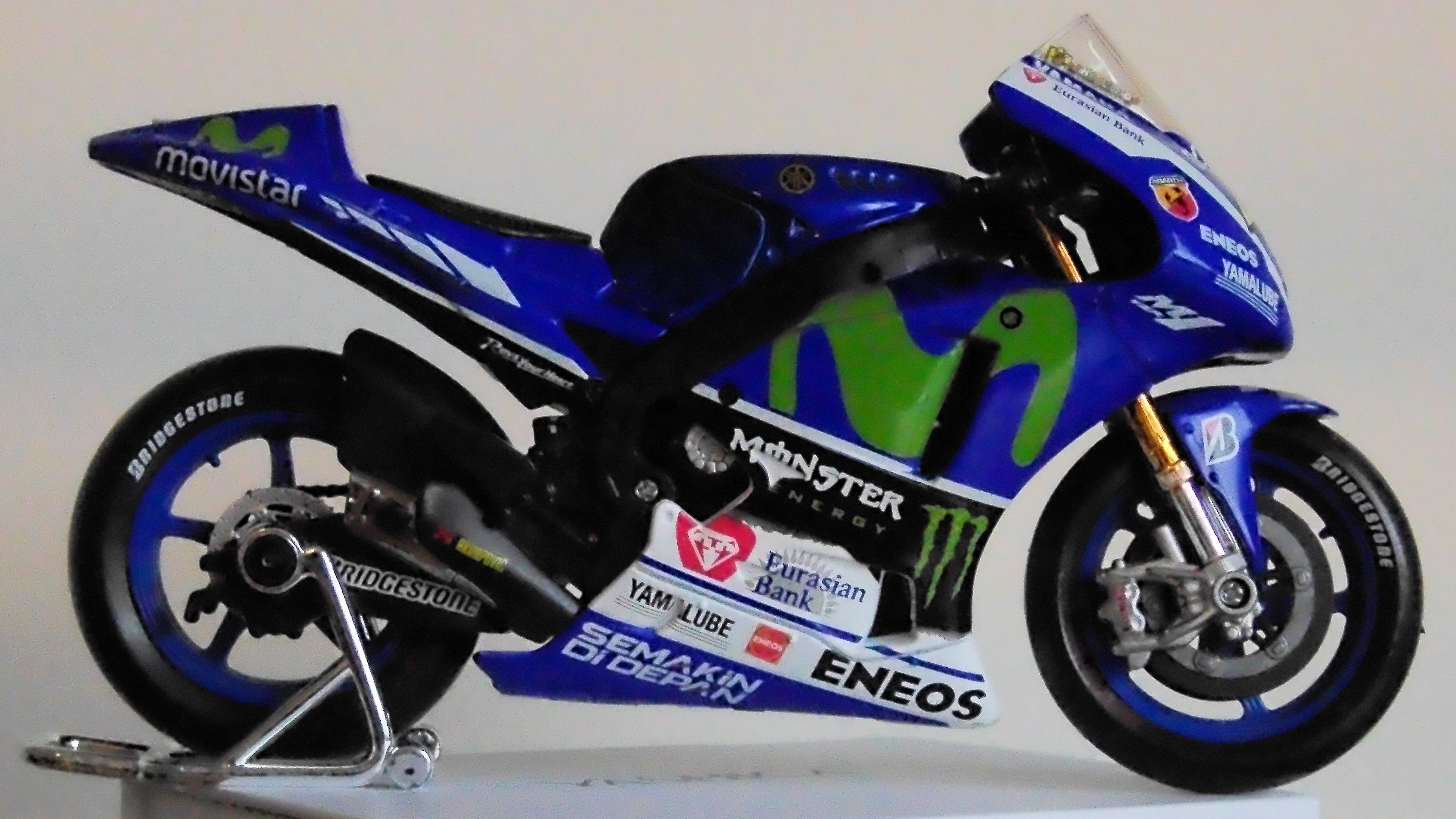
Let’s talk resolution. The claim of 72 megapixel stills from this little camera seems a little laughable. I felt no need to boost the resolution beyond the native 13 megapixels of its Sony sensor. At this setting, there’s plenty of sharpness and fine detail on tap at lower ISO settings. And let’s face it, it’s not that many years ago when Nikon was saying that 12 megapixels is enough for anybody! Sure enough, start ramping up the megapixel count and interpolation takes its toll on quality, with images taking on a pixelated or even blotchy appearance.
Yashica City 100: Sample Images
The following gallery of example images was shot in the UK city of Bath. They include city views taken under bright sunlight, as well as indoor shots of Bath’s Guildhall Market, with much more subdued lighting conditions.
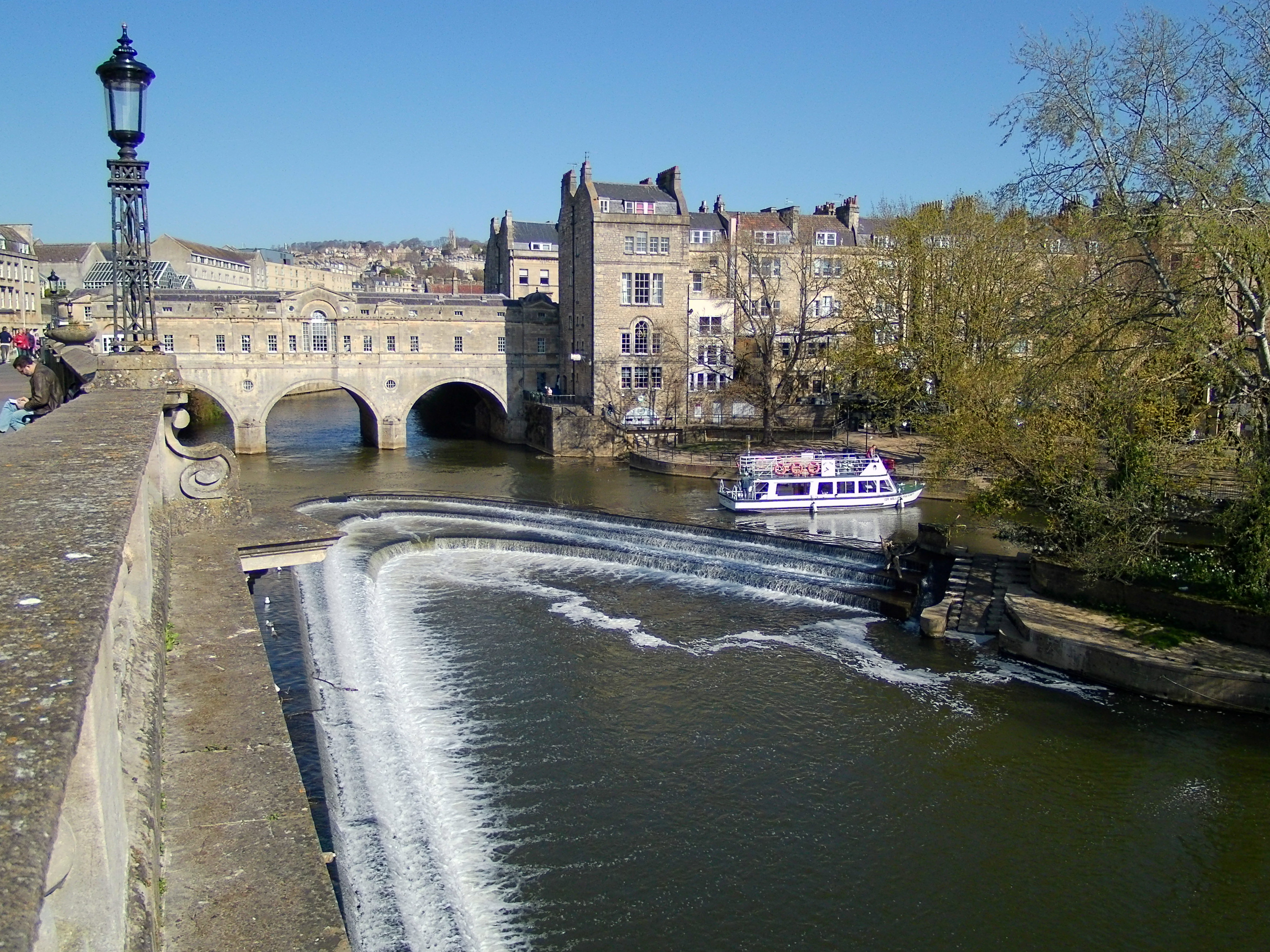
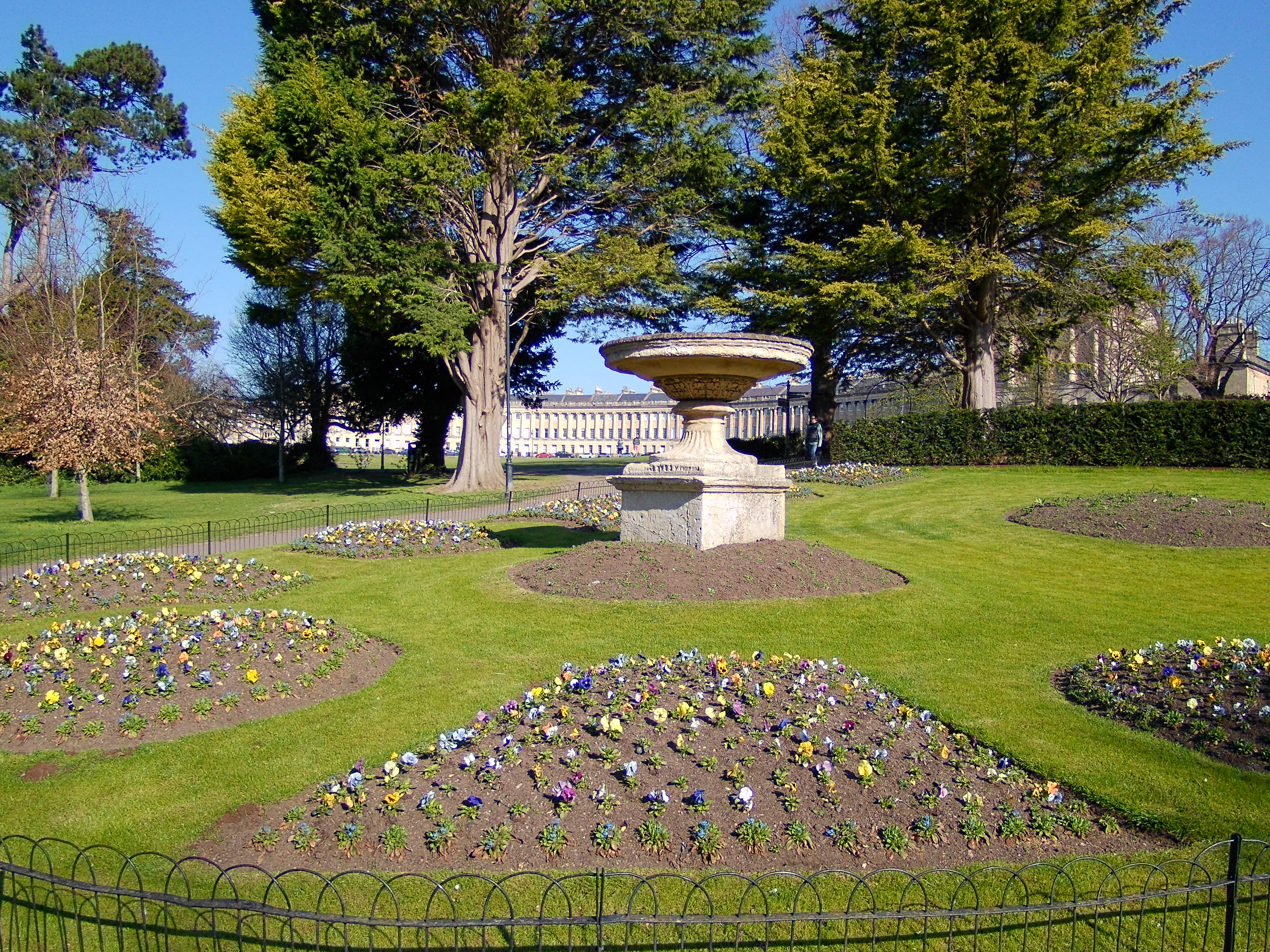
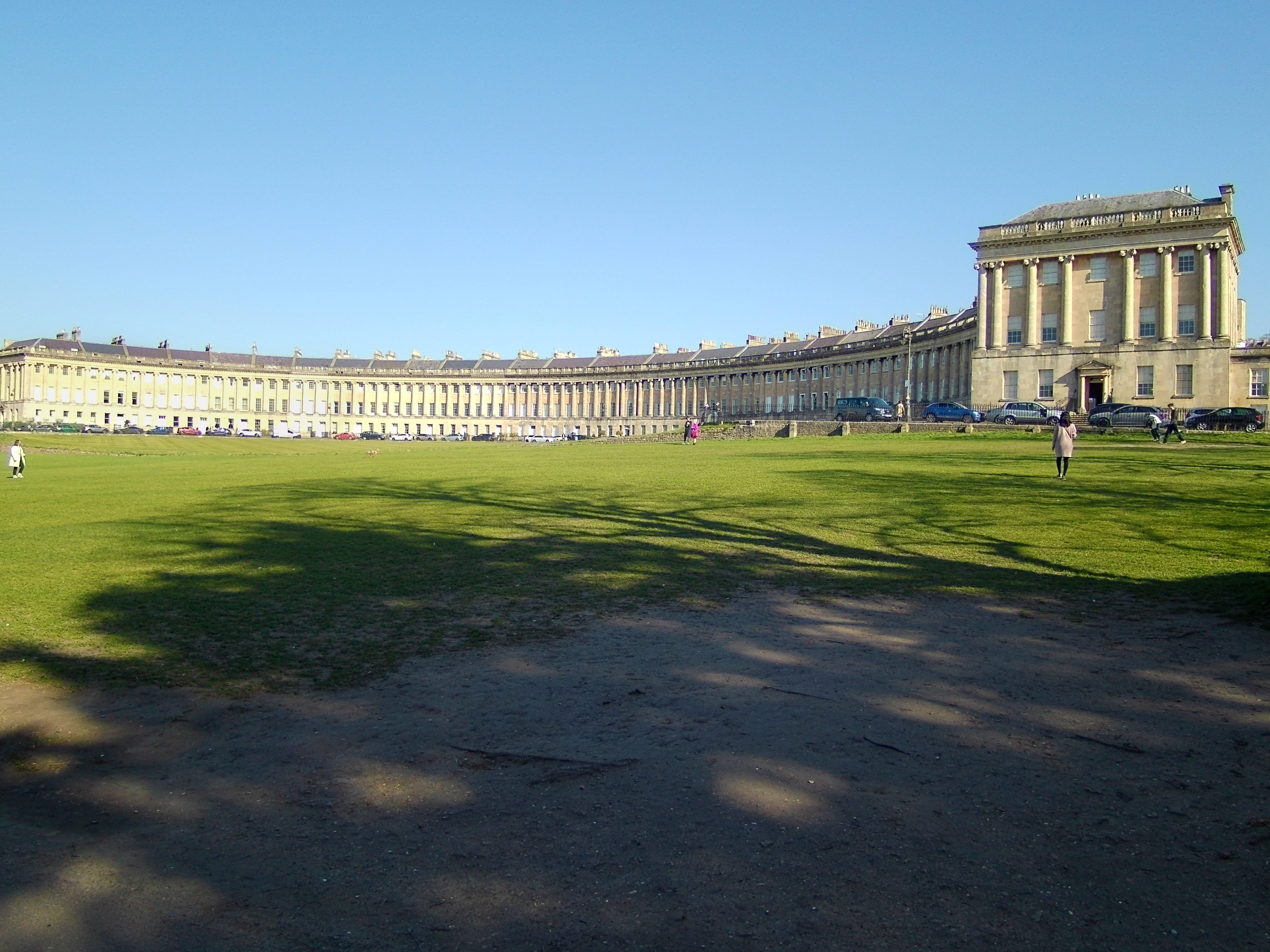
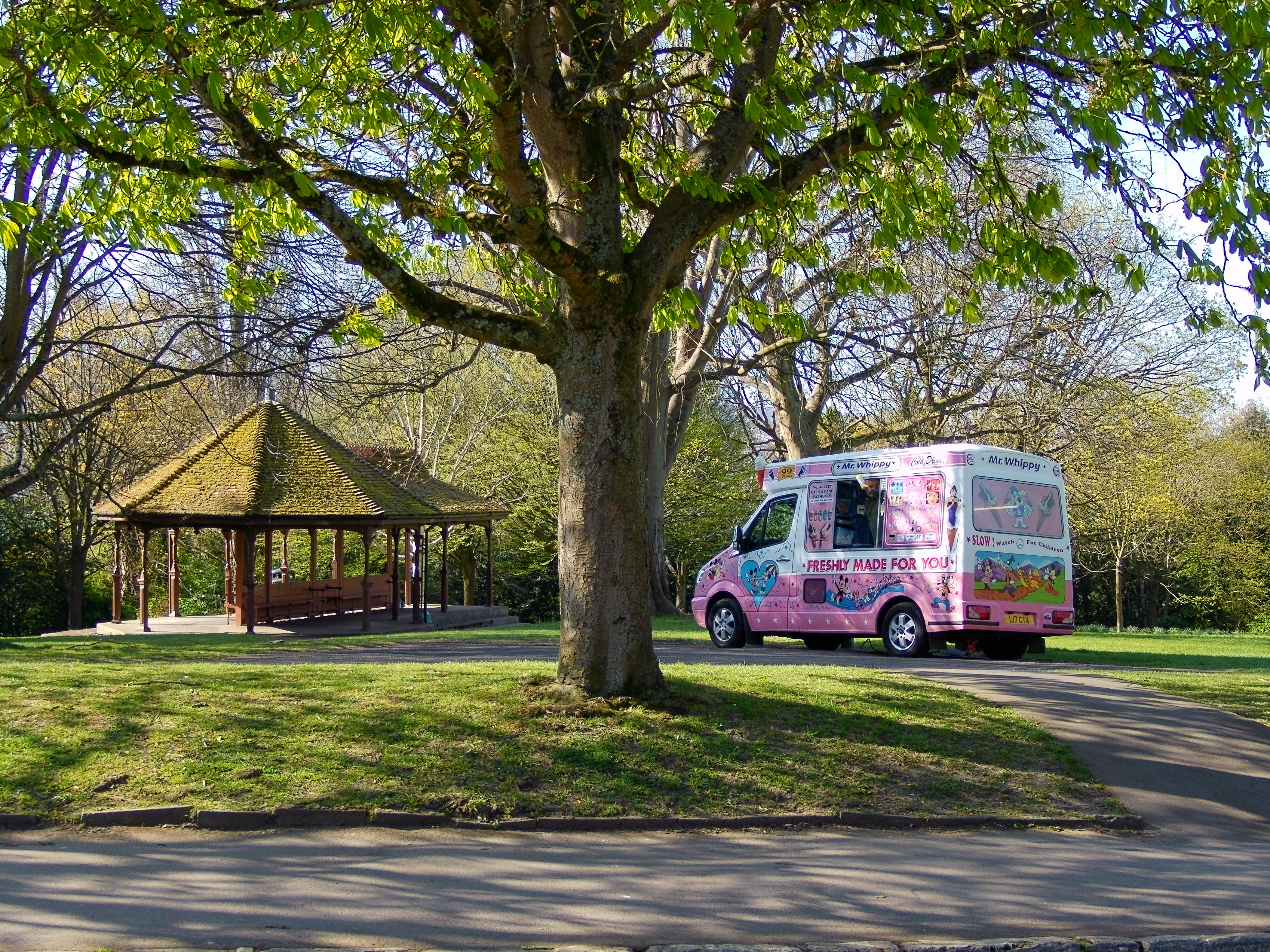
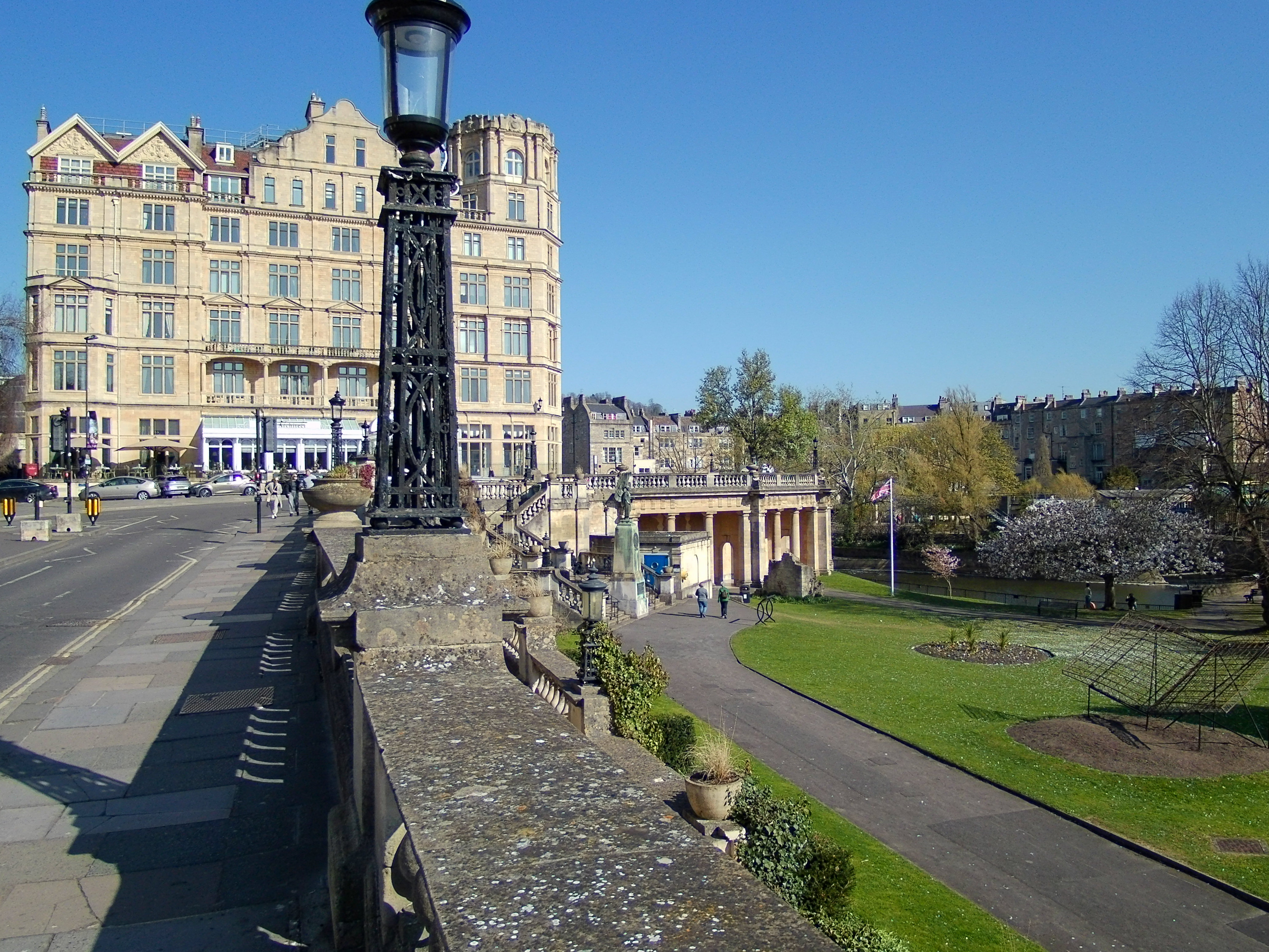
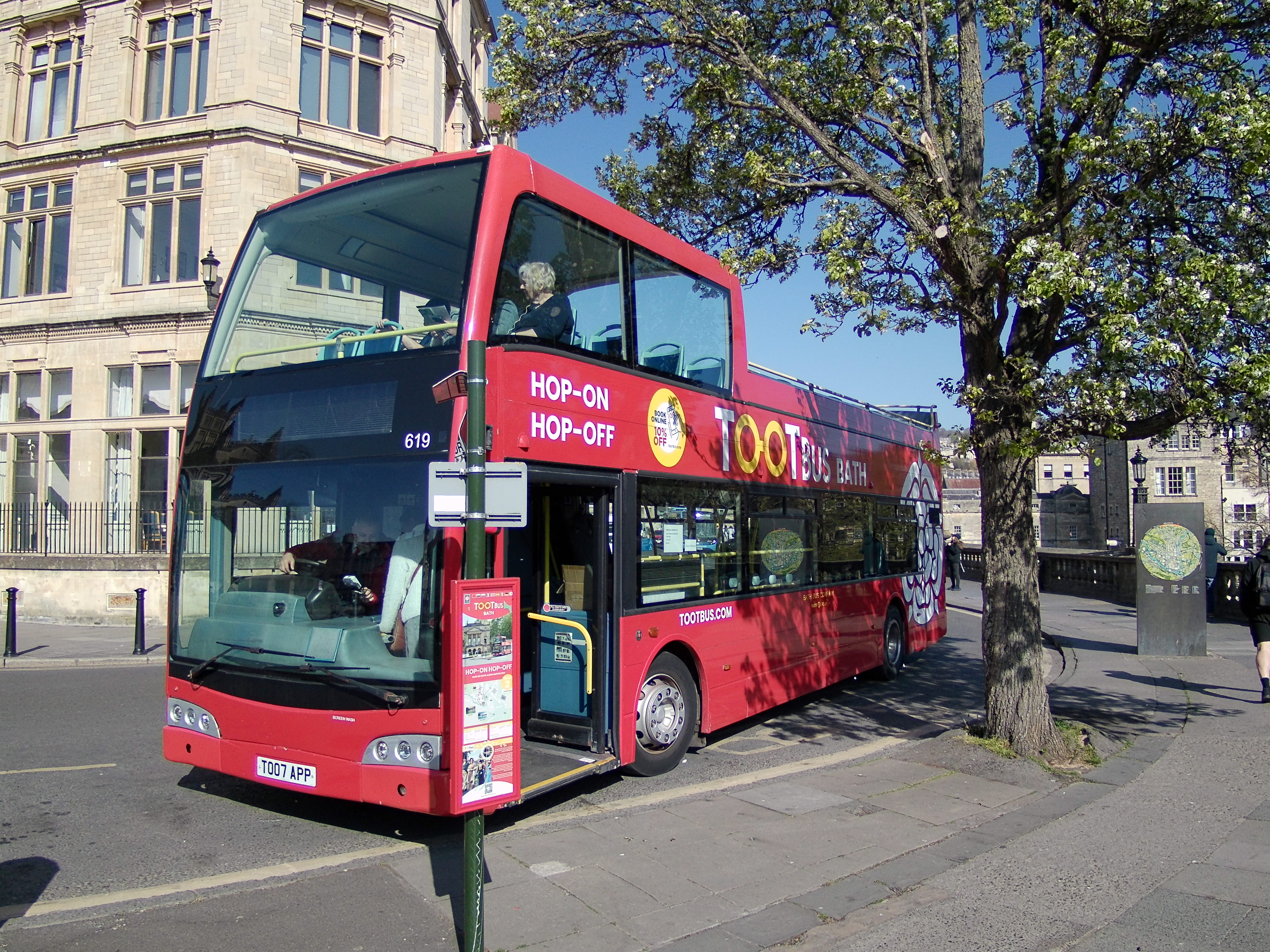
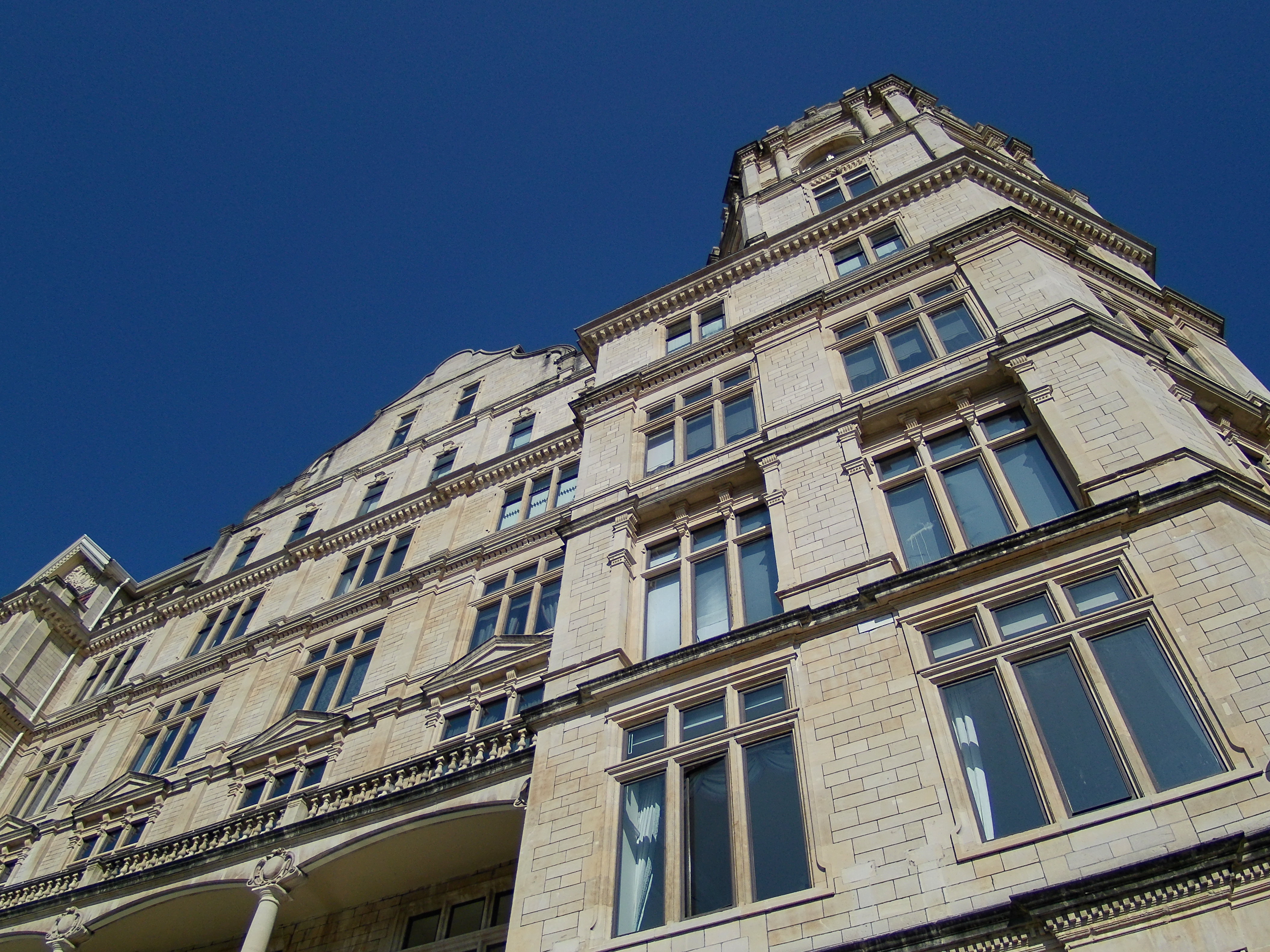
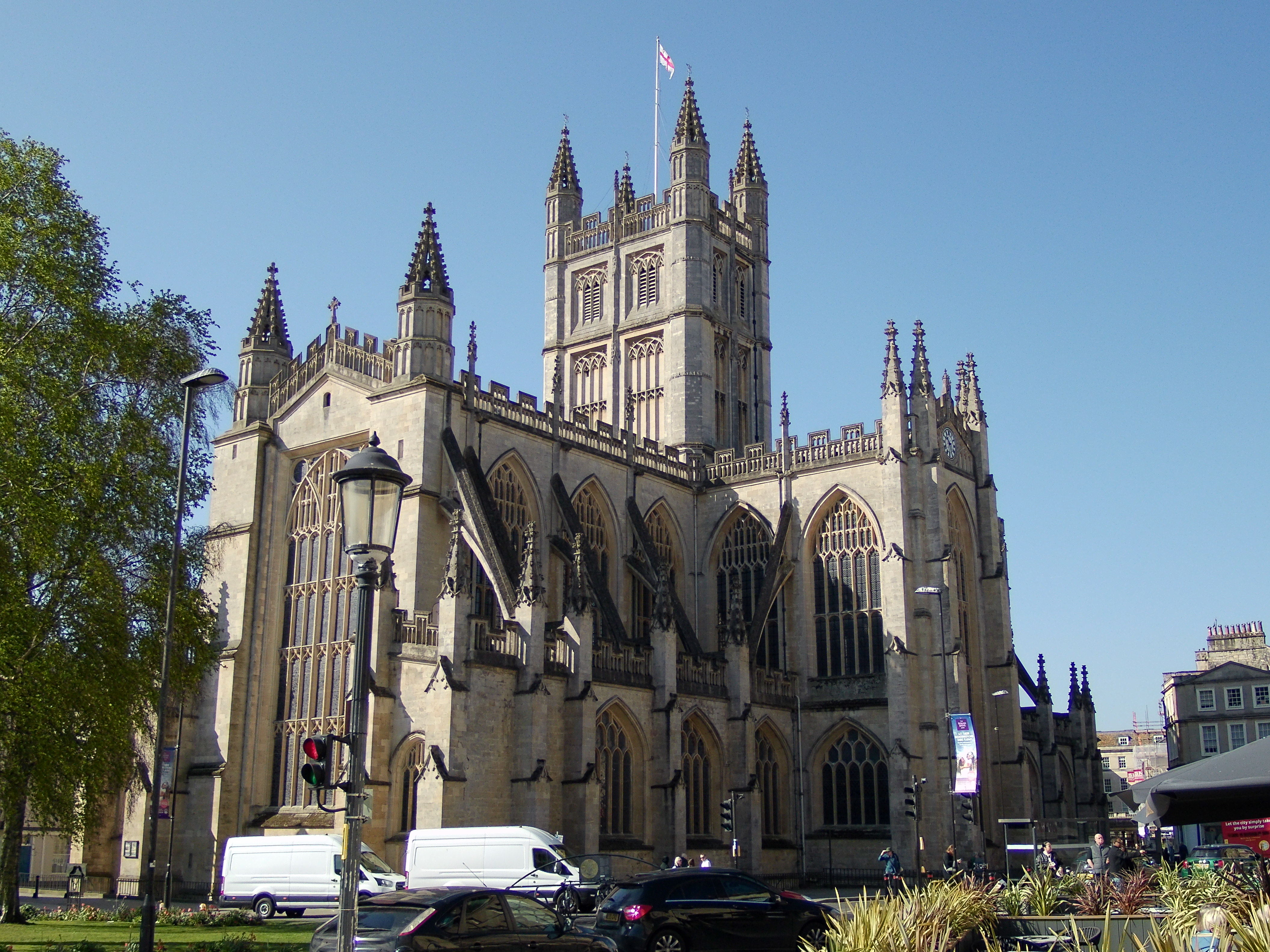
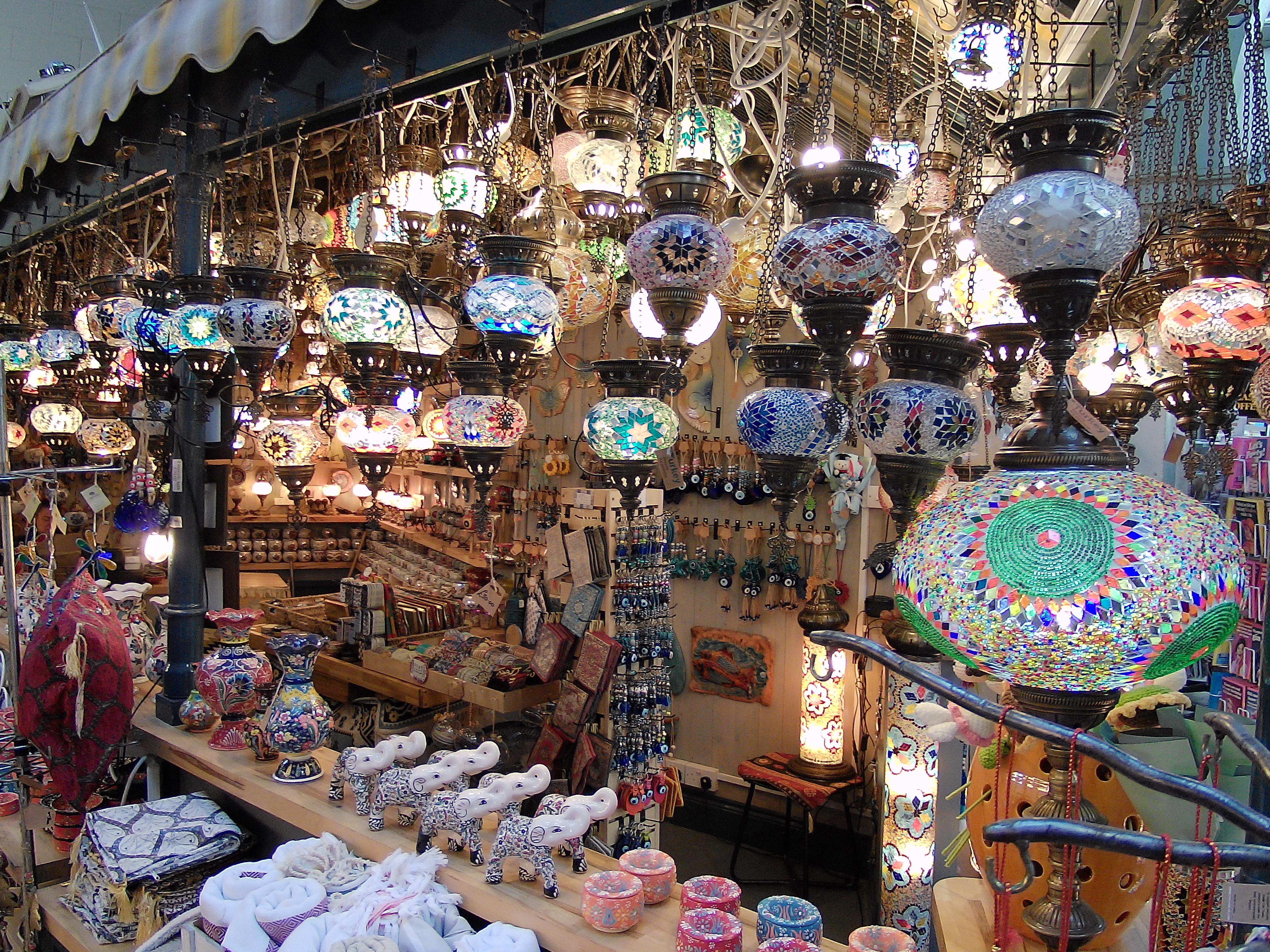
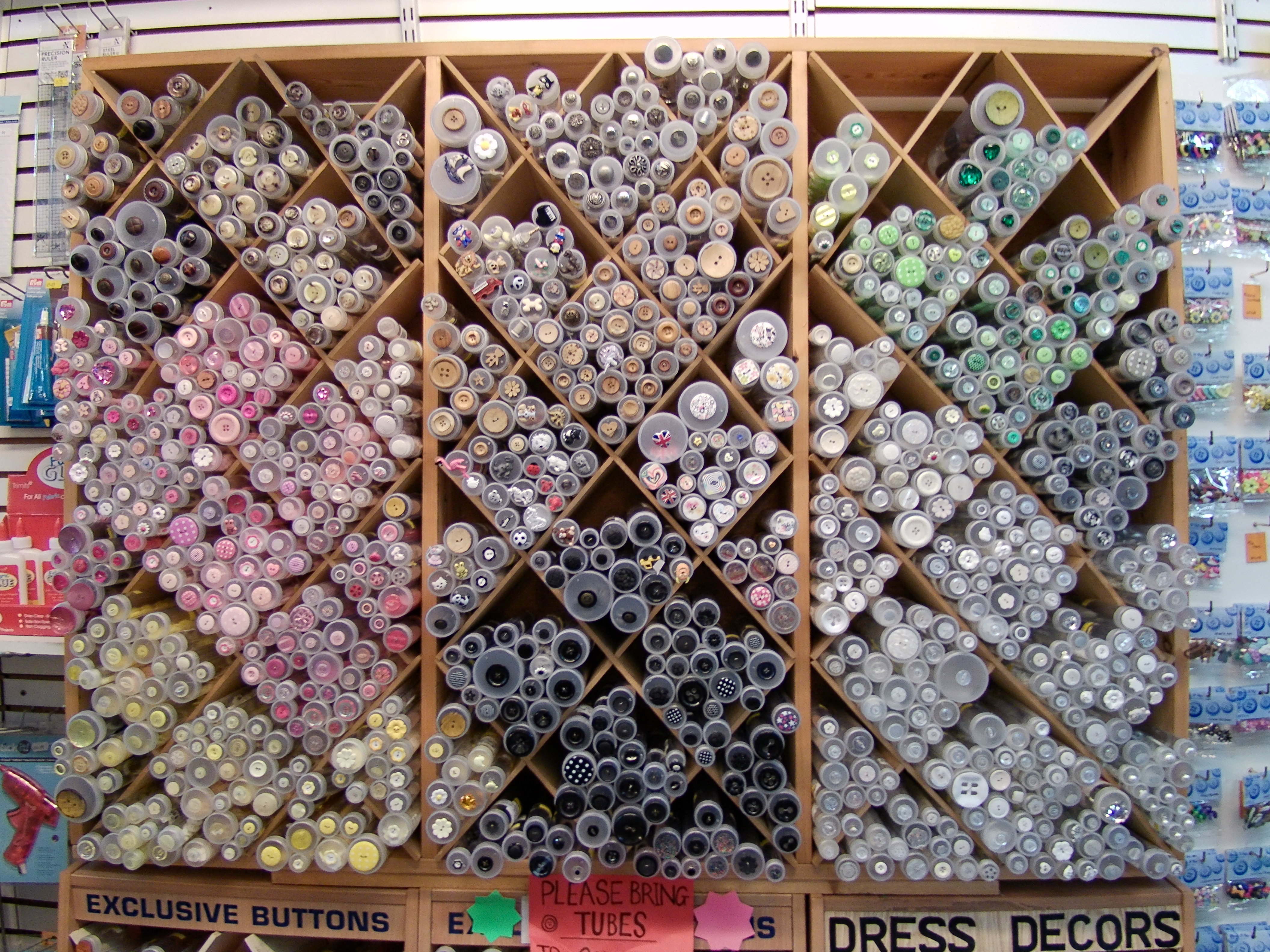
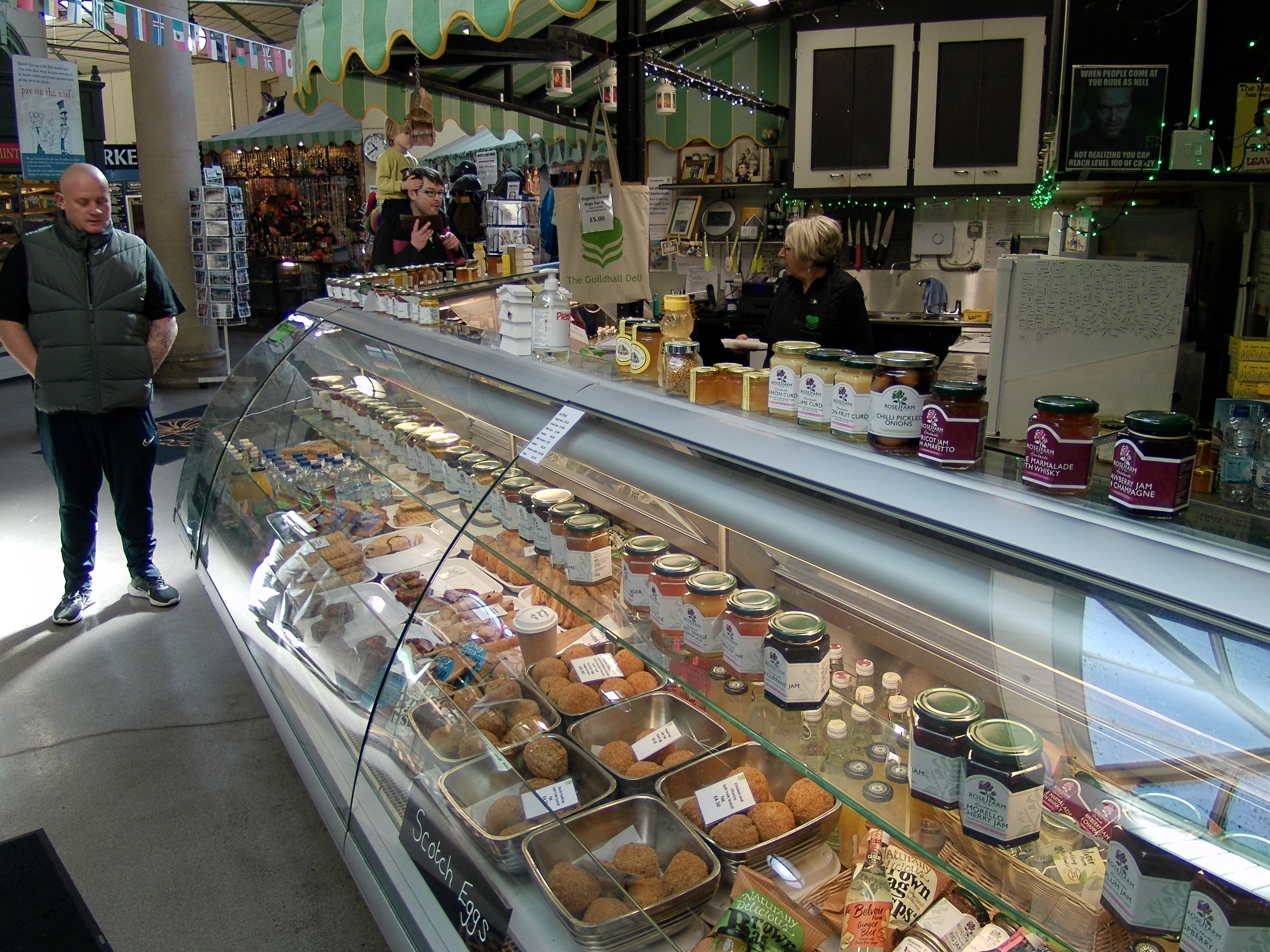
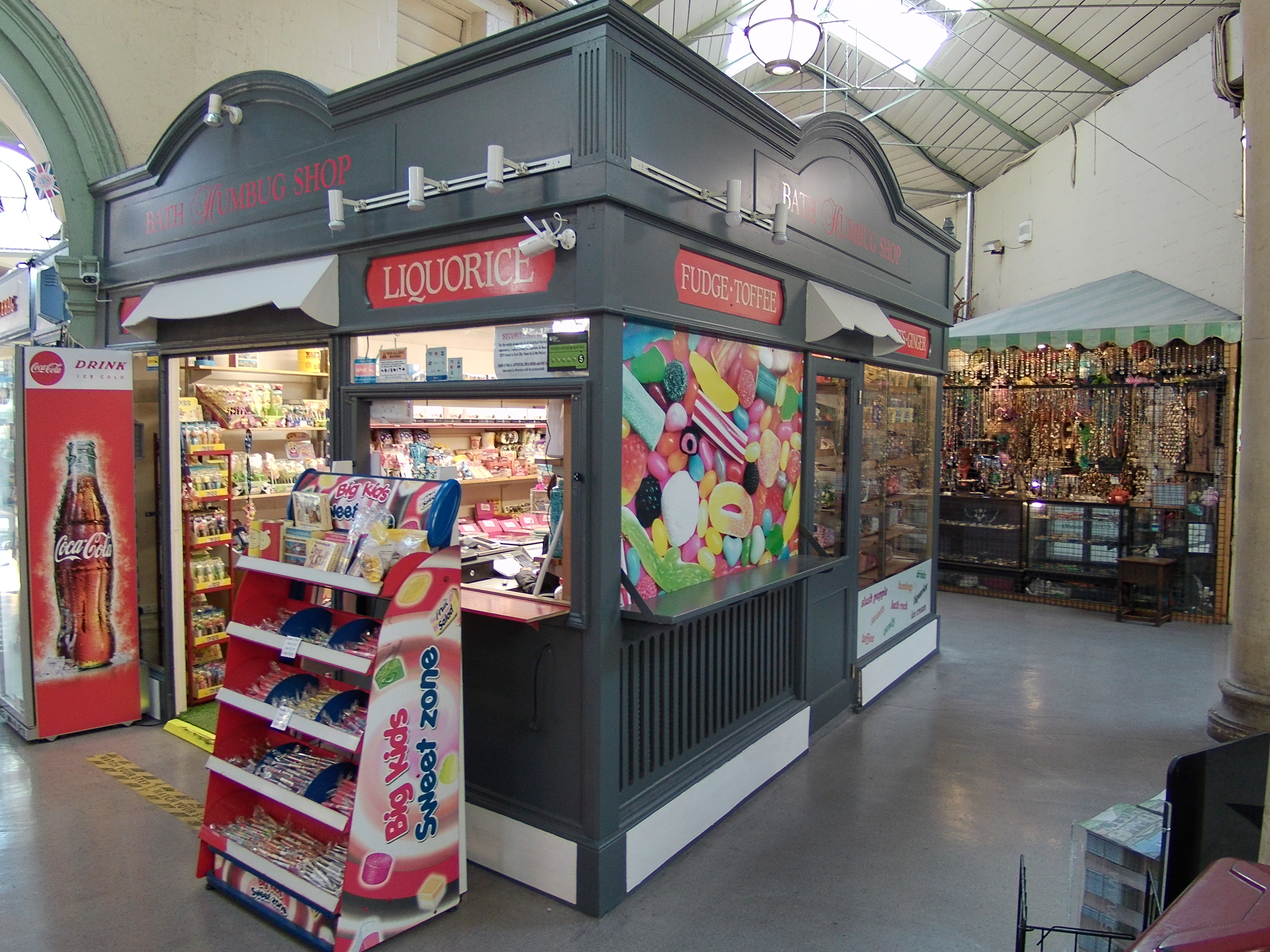
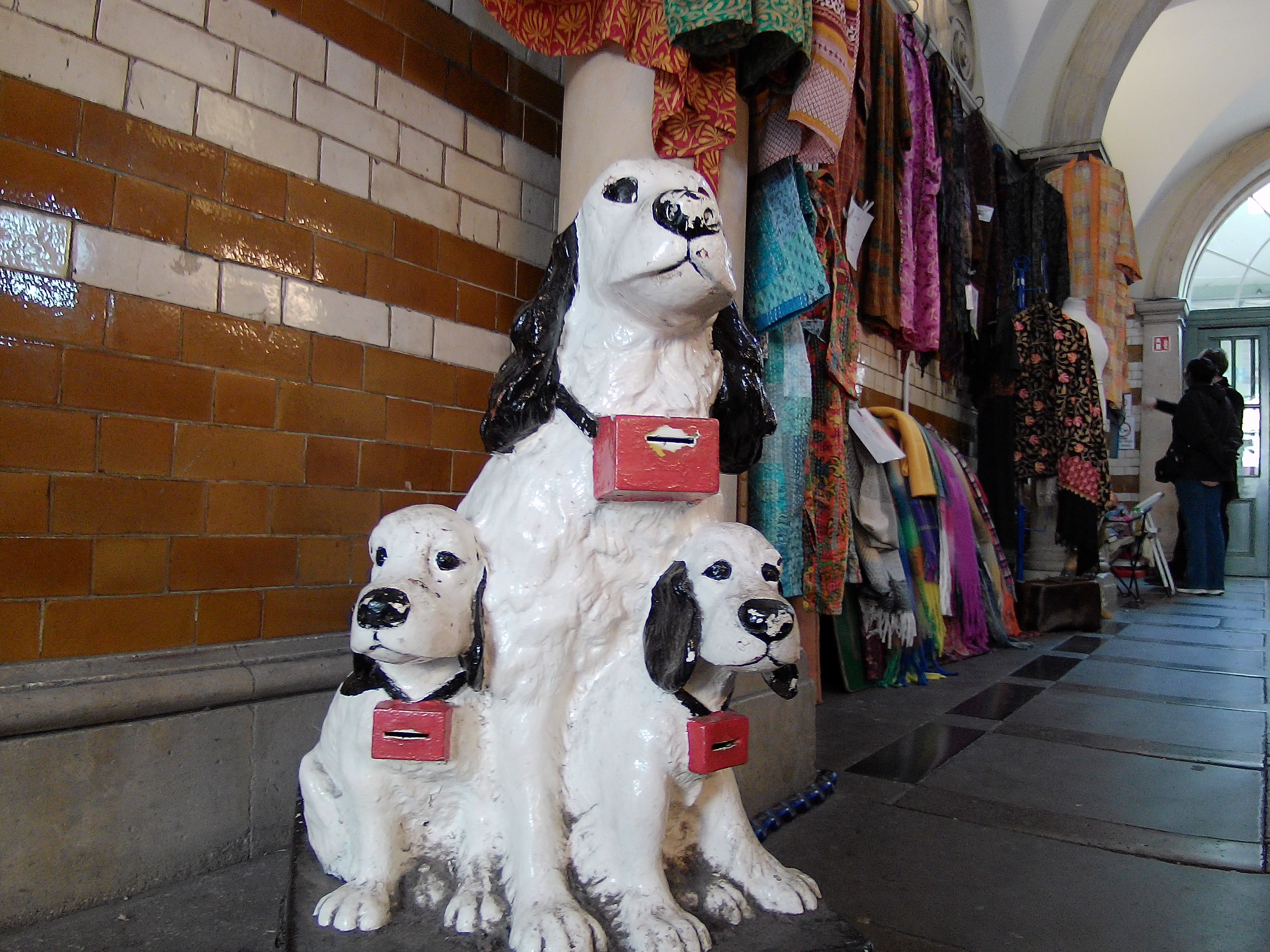


Yashica City 100: Video
Above: sample video shot with the Yashica City 100
Just as with the wild claims of 72 megapixel stills, the Yashica promises 5K30 and 4K60 video capture. My advice is don’t bother. In terms of picture quality, I found nothing to be gained from pushing the video resolution beyond 1080p, and you might just as well stick with the base resolution of 720p.
Another point that’s worth making is the image stabilization is on the menu for both stills and movie capture. In my tests, I found that enabling stabilization gave practically no benefit in handheld shooting. The example video footage below is based on three clips shot at 1080p. I’d say that video quality is acceptable rather than anything special, but again much better than with some of the budget compact cameras I’ve used lately.
Yashica City 100: Verdict
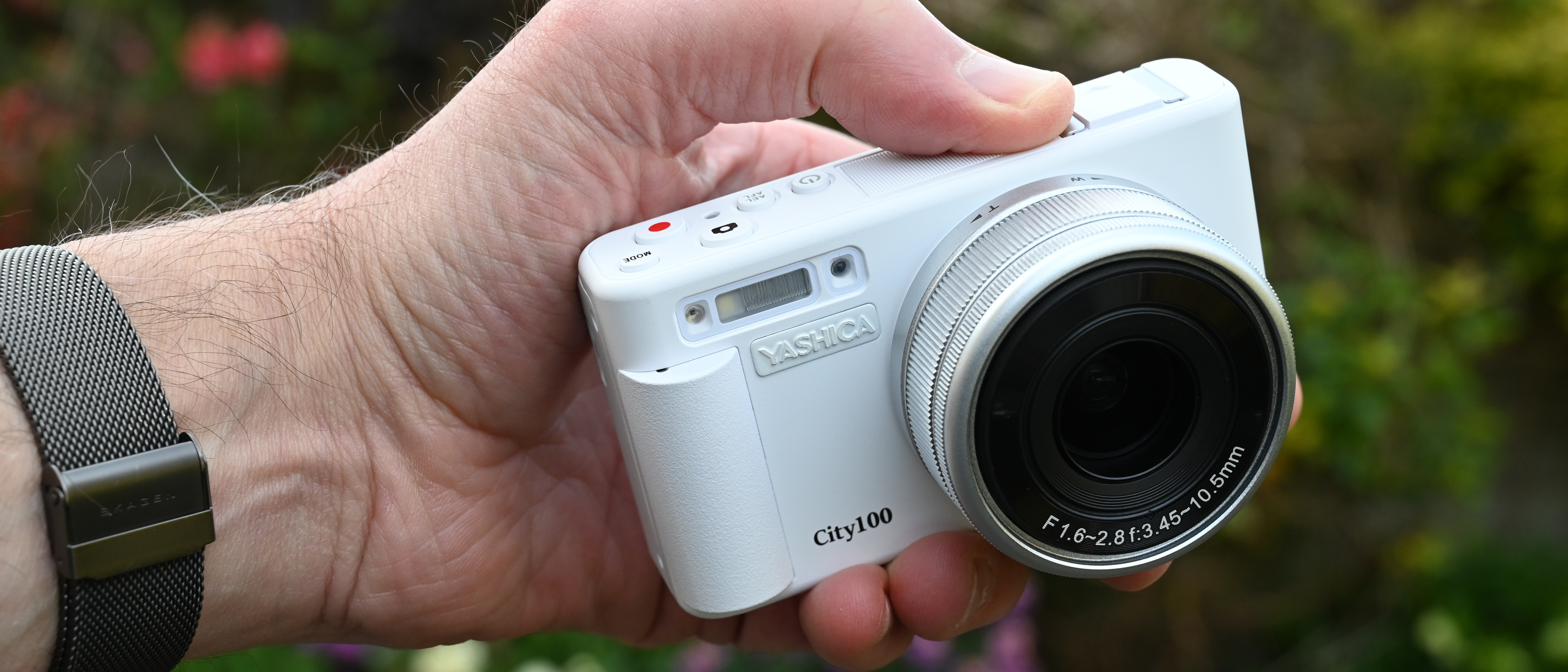
I think it’s important to keep a sense of perspective. It would be unfair to compare the Yashica City 100 with high-end compact cameras that cost upwards of four times the price, and rather missing the point. And the point is that the City 100 is a very affordable digital camera with a desirable set of features, including a flip screen and a motorized optical zoom lens. I found the camera genuinely fun to use and that its layout and ergonomics were ideally suited to the entry-level/beginner photographers for which it’s designed. Image quality and all-round performance are massively better than from many cheaper digital compact cameras that I’ve tested of late, making it more than worth the asking price. All in all, I think it’s a little camera with a big heart, and a lot to offer.
Features | Useful features include a flip-around LCD screen and a 3x optical zoom lens. | ★★★★ |
Design | The design is smart with good ergonomics and a neat layout of controls, but the lens isn’t retractable. | ★★★★ |
Performance | Image quality is far superior to that of many cheap compact cameras on the market. | ★★★★ |
Value | It’s twice the price of some ‘cheap’ compacts but well worth the extra outlay, being good value for money. | ★★★★ |
Alternatives
The Kodak PixPro FZ45 features a 16.35 megapixel sensor and 4x optical zoom lens (27-108mm equivalent). It has a 2.7-inch fixed screen at the rear, without the front flip ability of the Yashica. The Kodak costs around $90 / £94.
The AgfaPhoto Realishot DC8200 has an 18 megapixel image sensor, matching the native resolution of the Yashica. Like the Kodak, it has a 2.7-inch fixed rather than articulated rear screen. It’s a step ahead in its 8x optical zoom range and costs around $120 / £99.
Check out our guide to the best point-and-shoot cameras, or for a step up in quality see our suggestions for the best compact cameras
Matthew Richards is a photographer and journalist who has spent years using and reviewing all manner of photo gear. He is Digital Camera World's principal lens reviewer – and has tested more primes and zooms than most people have had hot dinners!
His expertise with equipment doesn’t end there, though. He is also an encyclopedia when it comes to all manner of cameras, camera holsters and bags, flashguns, tripods and heads, printers, papers and inks, and just about anything imaging-related.
In an earlier life he was a broadcast engineer at the BBC, as well as a former editor of PC Guide.
You must confirm your public display name before commenting
Please logout and then login again, you will then be prompted to enter your display name.

